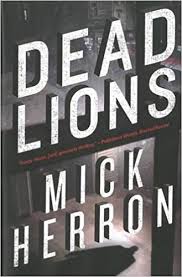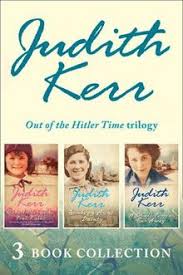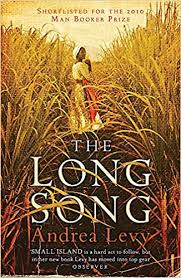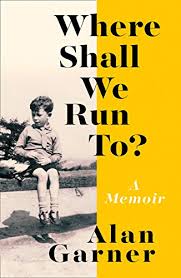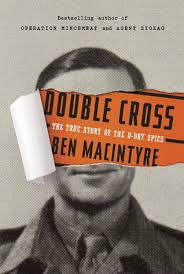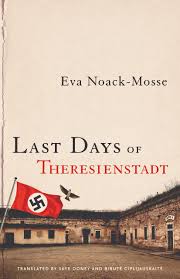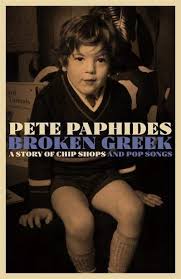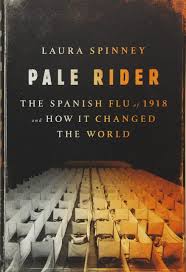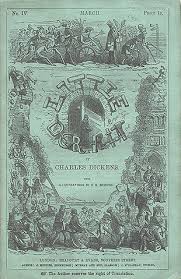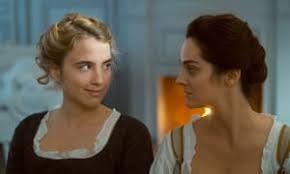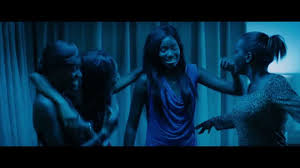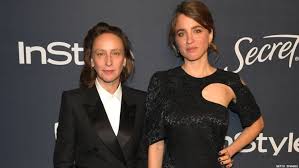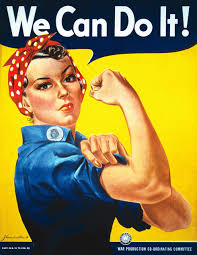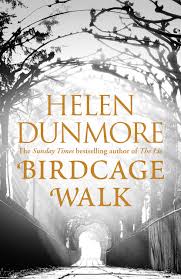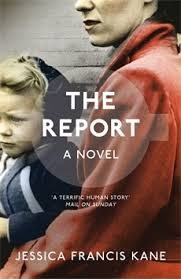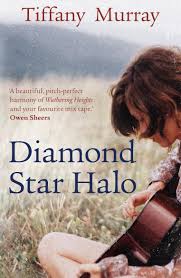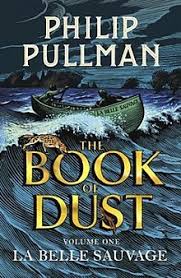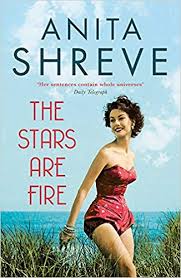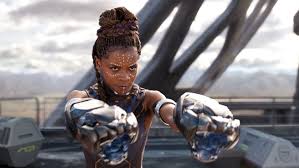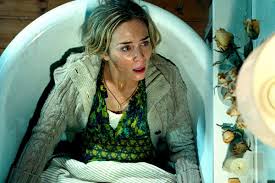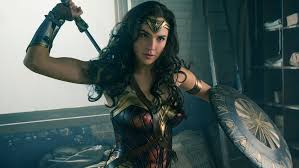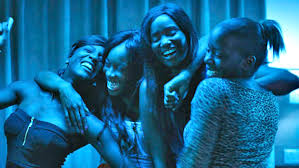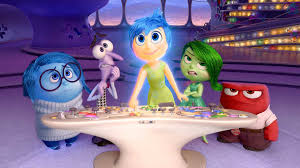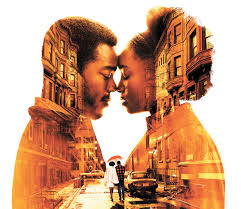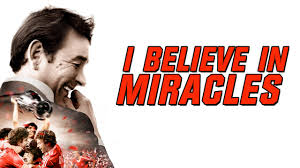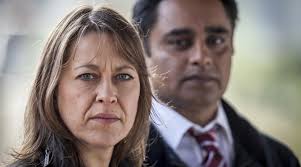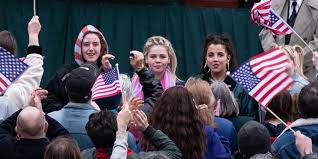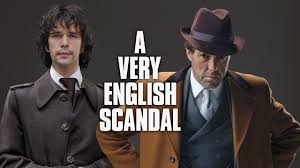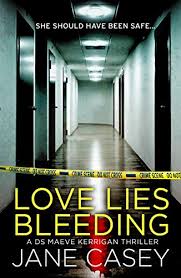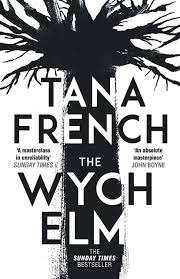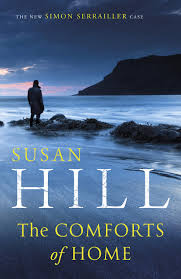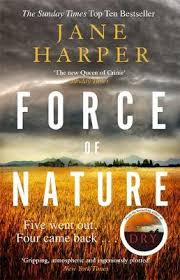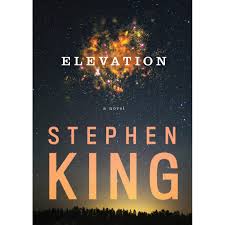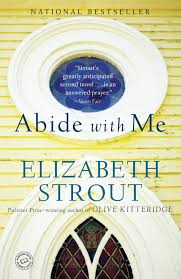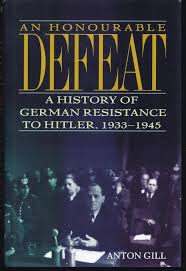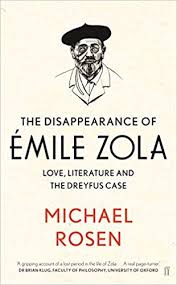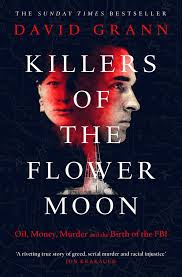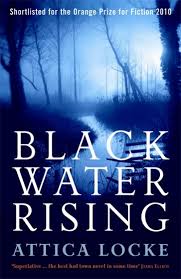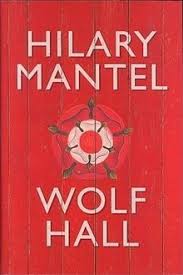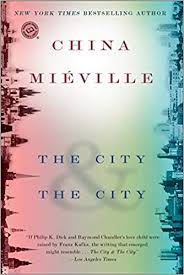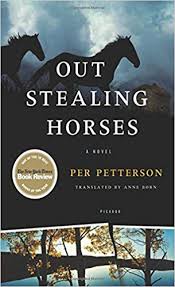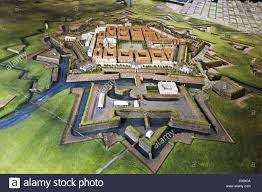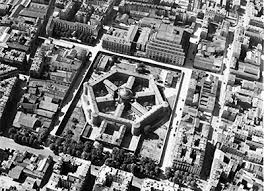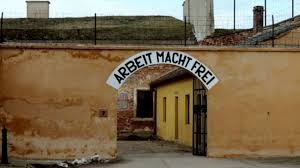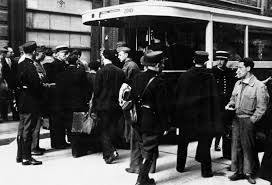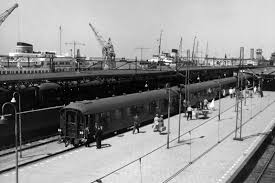Archive for category Literature
2020 Books – half-time report
Posted by cathannabel in Literature on July 1, 2020
We’re halfway through this strange, sad year. In theory, there’s been more time for reading since lockdown. But at times this year, not just due to Covid, I haven’t found it easy to focus on a book. Nonetheless, I’ve read a lot, and these are some of the highlights. In general, they reflect my need for what the brilliant Attica Locke recently described (in a tweet about Nicole Dennis Benn’s lovely novel Patsy, which I am reading at present) as ‘uplift with heft’. Too cosy and too obviously intended to be ‘heartwarming’ and I get angry, because life isn’t cosy, things don’t always work out OK, people die, people are sick, people are broken. Too grim and I just can’t bear it, not now, not in the midst of all this. There has to be something that lifts me up, some element of hope, the possibility of change for the better, the capacity of people to exceed one’s expectations, to be better and to do better.
There’s only one title here that specifically references the pandemic. But several of the fiction and non-fiction titles reflect my realisation part way through the year that my reading so far had been dismayingly white. It seemed appropriate, in the midst of the #BlackLivesMatter protests worldwide, to address that.
This isn’t everything I’ve read. I’ve missed a few re-reads, and I have, as I always do, omitted things I found mediocre, or clunky. This is the good stuff.
Fiction
Melanie Abrams – Meadowlark. A bow drawn at a venture, and a thoroughly good read. Like Glaister’s Chosen, it’s exploring the world of closed communities (aka cults), how seductive and deadly they are.
Belinda Bauer – The Shut Eye. A missing child mystery that doesn’t follow the path you expect, that is troubling and puzzling and shocking in all sorts of ways. Bauer is described by the Independent as ‘either so quirkily idiosyncratic – or just plain bloody-minded – that [her] books resolutely resist conforming to whatever the latest modishness is’.
Nicole Dennis-Benn – Patsy. I’m reading this on the recommendation of Attica Locke, as mentioned above. Patsy is a Jamaican immigrant in New York, living the precarious life of the undocumented, a life that separates her not only from her home and family, but from the hopes that brought her here.
Alan Bennett – The Uncommon Reader. This made me laugh, rather a lot, at a time when laughter was in short supply. Brilliantly witty and sharp, it also manages to be oddly touching.
Arnold Bennett – Hilda Lessways. This is Part 2 of his Clayhanger series, written in 1911, set in the Midlands in the late 19th century, with a female protagonist who blazes off the page.
William Boyd – Love is Blind. This is a tour de force, and my favourite of his books so far. It’s clever, but never just clever. ‘Audaciously unpredictable’ as the Guardian put it. The narrative takes us from Victorian Scotland to Paris to Russia and to the Bay of Bengal, it’s romantic and vivid, and totally engaging.
NoViolet Bulawayo – We Need New Names. Fine, powerful writing – and with humour amongst the grim. The trajectory is familiar – the African diaspora, in this case from Zimbabwe to the USA, but the voice is fresh.
Jane Casey – The Cutting Place. The latest Maeve Kerrigan, and quite possibly the best yet (I probably say that each time, but the series really does keep upping its game).
Lissa Evans – Old Baggage. A writer I’ve discovered only recently. I read Spencer’s List earlier this year, and after Old Baggage, I read its sequel, Crooked Heart, and eagerly await V for Victory in August. Funny and moving, with characters that get under your skin and into your head and your heart.
Nicci French – The Lying Room. This is the first I’ve read from the husband and wife team of Nicci Gerrard (who I know as a campaigner for dementia patients in hospital, and author of the powerful and moving What Dementia Teaches us about Love) and Sean French. And very good it is too – steeped in secrets and lies. I will read more.
Tana French – The Trespasser. Latest in the splendid Dublin Murders series. Though we call it a series, French’s distinctive technique is to shift the focus from novel to novel, so that a peripheral character in one becomes the main protagonist in the next.
Patrick Gale – Take Nothing with You. One of his best. And the writing about music is so vivid that I could almost hear it as I read.
Lesley Glaister – Chosen. The latest from a favourite writer whose work I’ve been following for many years, a gripping and intense psychological thriller, like Meadlowlark, exploring a closed community. Very twisty.
Elizabeth Goudge – The Bird in the Tree / The Herb of Grace / The Heart
of the Family. First read when I was a teenager, and returned to in the hope of ‘uplift with heft’, The Eliots of Damerosehay trilogy is mystical, romantic, intense – all about hope, and the redemptive power of place
to heal broken humans.
Elly Griffiths – The Lantern Men. The new Ruth Galloway. Always feel like I’m meeting up with a friend when I read these, I’d love to go down the pub with Ruth (when that sort of thing becomes normal again, obviously). And of course, there’s a splendid mystery, and the cast of supporting characters is drawn with humour, insight and affection.
Yaa Gyasi – Homegoing. I’ve had this one in my TBR pile for a while, but it felt as though this was the time to open it. It’s a complex narrative, on a huge scale (centuries, continents). It starts, though, in places that resonate with my own childhood in Ghana in the early 60s – Cape Coast Castle and Kumasi. Often harrowing, always compelling.
Emma Healey – Whistle in the Dark. By the author of the excellent Elizabeth is Missing, a mystery with an ending that is both terrifying and moving.
Mick Herron – Dead Lions. Second in his Slow Horses series, about a department of MI5 rejects – acerbically funny but without pulling any emotional punches.
Susan Hill – The Benefits of Hindsight. The latest in her excellent Simon Serailler detective series, as always musing on mortality and morality whilst solving the crime.
Judith Kerr – Out of the Hitler Time. This is a trilogy of lightly fictionalised autobiography by the late and dearly beloved author of Mog and The Tiger who Came to Tea, starting with the Kerr family’s narrow escape from Nazi Germany.
Philip Kerr – Metropolis. Sadly the last in the brilliant Bernie Gunther series of detective novels set before, during and after the Nazi era.
Stephen King – If It Bleeds. This guy is unstoppable. A collection of short stories, two of which are kind of standard King – which is still a very good thing – and two of which are classic King which is brilliant.
John le Carré – Legacy of Spies. One more, probably last, Smiley novel from the master. It has an elegiac tone, including a final eulogy to the dream of European collaboration and unity.
Andrea Levy – The Long Song. Very powerful and moving. I loved the storyteller’s voice, the dialogue and the ongoing arguments between her and the person who’s pressing her to tell the story, the gaps that can’t be filled.
Laura Lippman – The Lady in the Lake. Another excellent psychological thriller from Lippman, a polyphonic narrative, using glimpses of events from a number of different points of view to complement or contradict the protagonist’s perspective.
Attica Locke – Pleasantville. Sequel to Black Water Rising, which I read last year, it picks up the story of black Texas lawyer Jay Porter fifteen years after the events of that book. It’s a riveting plot, with a great cast of complex characters and the ability to move between state politics and the domestic exigencies of single parenthood with grace and perception.
Adrian McKinty – The Cold, Cold Ground. First of his Belfast-set Sean Duffy crime series, which I will definitely be following up.
Denise Mina – Still Midnight. Starts with an Asian family facing a home invasion, doesn’t go where you expect it to, gets hold of you and doesn’t let you go till the last page.
Sarah Moss – The Tidal Zone. I properly got into Moss last year and this year have read The Ghost Wall and this one, which is entirely different again (one never does know quite what to expect with Moss). As the Guardian says, this is a novel about the NHS, which makes it rather timely, and about parental anxiety, but also about art, and ideas.
Maggie O’Farrell – This Must be the Place. Always brilliant. Not my top O’Farrell but excellent. As the Guardian says, she is ‘a deft and compelling chronicler of human relationships’.
Louise Penny – A Fatal Grace. The second in the Inspector Gamache series, set in a small Québécois town. They’re not at the gritty end of crime fiction (it’s been said that they’re modelled on the classic British whodunit) but that doesn’t mean they’re superficial or cliched.
Susie Steiner – Remain Silent. We’ve had a long wait for the new Manon Bradshaw but it was worth it. Manon is a tremendous, real, often abrasive and annoying central character. And one can’t be unaffected by the knowledge that Steiner has been undergoing treatment for a brain tumour, and that the latest news is not good.
Elizabeth Strout – Olive Kitteridge. I read Abide with Me last year, and this is the third Strout I’ve read this year. Exceptionally good, deeply empathetic, a novel in interlinked short stories (like Anything is Possible).
Meg Waite-Clayton – Beautiful Exiles. This is a fascinating novel about the formidable Martha Gellhorn. Gellhorn hated being described as the third Mrs Hemingway, so I did wish that Waite-Clayton had continued the story after she finally dumped Hemingway…
Elizabeth Wein – The Enigma Game Another brilliant WWII YA novel from the author of Code Name Verity. Thrilling and moving stuff.
Colson Whitehead – The Nickel Boys. This one I think even surpasses The Underground Railroad. It’s devastating. Brilliantly constructed, and with a twist that’s no gimmick, and a protagonist who you want so very badly to be OK whilst knowing the odds against that…
Non-Fiction
Chimanada Ngozi Adichie – Dear Ijeawele, or A Feminist Manifesto in Fifteen Suggestions. My favourite contemporary African writer, passing on her thoughts on feminism to a friend, who’s asked her advice on raising a daughter. The feminism itself isn’t revelatory but Adichie is writing from within the Nigerian Igbo culture that she and her friend share, and that makes it fresh and engaging.
Angela Davis – Women, Race and Class. Davis was one of my heroines, when I was educating myself about the civil rights movement as a teenager. She was, and is, awesome. This was written in 1983, and it’s ahead of the game in terms of what we would now call intersectionality, tracing the connections between the abolitionist movement, the suffragists, and the civil rights struggle to show how those priorities, those needs, coincided or conflicted.
Dorothy Day – The Long Loneliness. I knew absolutely nothing about Day until my son discovered her, whilst doing an MA in American History. She was a remarkable woman – a Catholic socialist anarchist, a journalist and activist, who co-founded the Catholic Worker Movement, and faced controversy for her refusal to support Franco in the Spanish Civil War. This autobiography was published in 1954 (she died in 1980). As baffling as I find her religious faith, her account of the social and political upheavals in which she was involved is fascinating.
Jason Diakite – A Drop of Midnight. Another fascinating memoir from someone I hadn’t heard of! Diakite is a black Swedish rapper, and here he explores his family history and his father’s roots in the American south, and musing on music, race, and the importance of shiny shoes.
Lara Feigel – The Love Charm of Bombs. The Blitz through the eyes of writers (including Graham Greene and Elizabeth Bowen) who lived through it and did their bit in some way (air-raid wardens, ambulance drivers, etc). The most interesting, actually, is the exiled Austrian novelist Hilde Spiel.
Alan Garner – Where Shall we Run to? A beautiful, brief memoir of growing up in a landscape that’s steeped in history (ancient and family) and in mythology, the landscape that inspired Garner’s novels, from his children’s book The Weirdstone of Brisingamen to his most recent novel, Boneland.
Atul Gawande – Complications: A Surgeon’s Notes on an Imperfect Science. These are essays written whilst Gawande was doing his general surgery residency, focusing on fallibility, mystery and ethics. Honest, inspiring and terrifying.
Heda Margolius Kovaly – Under a Cruel Star. Cruel indeed – Kovaly survived the Łódź ghetto and Auschwitz, and escaped the death march to Belsen, but under the postwar regime in Czechoslovakia, her husband was murdered in one of Stalin’s show trials – the Slansky trial, which mainly targeted Jews, and she, tainted by association with a ‘traitor’, struggled to survive before escaping west in 1968.
Diarmaid MacCulloch – Thomas Cromwell. Homework, if you like, for my reading of The Mirror and the Light. It’s notable how much respect is given here to Mantel’s grasp of the history. It’s a hefty tome, but fascinating. I can’t pretend I was equipped to really appreciate the finer points of Tudor politics, but I got a lot from the book, nonetheless.
Ben MacIntyre – Double Cross. Another extraordinary account of WWII espionage. If this was a novel one might accuse it in places of implausibility – a cast of extraordinary characters and plots of extraordinary audacity, on which millions of lives depended.
Kenan Malik – From Fatwa to Jihad. The updated version of Malik’s 2010 exploration of how the Rushdie affair transformed the debate worldwide on multiculturalism, tolerance and free speech, helped fuel the rise of radical Islam and pointed the way to the horrors of 9/11, 7/7, Charlie Hebdo…
Lucy Mangan – Bookworm. This memoir of a childhood spent reading, voraciously, obsessively, constantly reading, really spoke to me… Mangan is a lot younger, and so some of the books that she devoured were too young for me by the time they came out, but she read everything, so there’s a lot of common ground. Very funny, absolutely delightful.
Eva Noack-Mosse – Last Days of Theresienstadt. Noack-Mosse was deported in early 1945 to the Nazi concentration camp of Theresienstadt. Working in the camp office, she compiled endless lists for the SS, but also her own clandestine statistics and observations. Postwar, this evidence not only helped to reconnect displaced people with their family and friends (or at least to know their fates) but also contributed to war crimes trials.
Marcus O’Dair – Different Every Time. Authorised biography of wonderful musician Robert Wyatt. Affectionate and admiring, but clear-sighted, it’s a fascinating insight into the music and, with it being Wyatt, the politics.
Maggie O’Farrell – I am, I am, I am: Seventeen Brushes with Death. The only writer to crop up in both the fiction and non-fiction sections of this blog. Incredibly tense, these encounters with death are nonetheless about life. O’Farrell was inspired to write it because of her daughter’s severe immune disorder and the experience of facing down death with and vicariously through her daughter.
Pete Paphides – Broken Greek. In a way, this is the musical equivalent of Lucy Mangan’s memoir. It’s the account of a childhood where music – the pop music of the era, as naff as it often was – had overwhelming power and significance. It’s also a story of chip shops, where his Greek-Cypriot parents worked to support their family, and of colliding cultures. It’s very funny, and joyful.
Johnny Pitts – Afropean. I was always going to want to read an exploration of blackness and European identity that starts in my own home town of Sheffield, before heading out to Paris, Amsterdam, Brussels, Lisbon, Moscow… Whether or not Pitts finds his tribe on this quest, as the Guardian puts it, ‘Afropean announces the arrival of an impassioned author able to deftly navigate and illuminate a black world that for many would otherwise have remained unseen’.
Rebecca Solnit – Men Explain Things to Me. A 2014 collection of essays, of which the title essay is the earliest (2008) and is credited with launching the concept of ‘mansplaining’ (not the term, which Solnit doesn’t use or like). Solnit is witty, clear, and absolutely furious. Excellent stuff.
Laura Spinney – Pale Rider. This could hardly be more pertinent – a study of the ‘Spanish’ flu pandemic of 1918-19, how it spread, how it was treated, how different governments responded. Lots of parallels, of course, with our own time. Where we are lucky is that our own pandemic does not follow directly on one of the most destructive wars in history, with populations exhausted, malnourished, displaced. We could have learned a lot, though, if the right people had been interested in learning rather than posturing…
Ron Stallworth – Black Klansman. The story behind Spike Lee’s brilliant BlacKkKlansman, a story which one might have assumed to be a parable rather than reality. Stallworth himself didn’t tell how he infiltrated the KKK until 2006, and this account was only published in 2014. It’s fascinating and astonishing. It’s not just about the Klan, of course, it’s about what it was to be a black cop in the 1970s in the USA.
Under lockdown, I’ve travelled through time and around the globe. I’ve been back to 16th century England, 18th century Ghana, 19th century France and Russia, Nazi Berlin, Iron Curtain Prague. I’ve been to Jamaica, the Andaman Islands, Zimbabwe, Nigeria. I’ve been all over the US – Baltimore and Texas, Maine and Florida, Colorado and South Carolina, New York and Detroit. I’ve been all over my own homeland too. I’ve shared lives and experiences that are close to my own, and others that are so utterly different that I could never have imagined them.
Thanks to all of the writers who’ve opened those doors to me. Whatever else the second half of 2020 brings, there will be more books, more doors into other lives and experiences. I’ll let you know what I find.
Books for the Plague Times
Posted by cathannabel in Literature on March 17, 2020
We’re all experiencing varying degrees of anxiety just now, depending upon our own age and health, or that of the people we love, the people on whom we rely, or who rely on us. We don’t know what’s going to happen, we’re bombarded with information from sources of unknown reliability, and drip-fed information from our government.
What we do know is that all of us are already affected, our lives have already changed. We’re taking precautions that would have seemed silly a couple of weeks ago, and the things we were talking about so intently a couple of weeks ago (Brexit, the football results, holiday plans) are no longer occupying our minds. We’re scared, we’re frustrated, we are in limbo, we are at a loss.
If we find ourselves spending more time at home, as a precaution or through illness, we’ll need more books. Never mind the bog rolls, load up your Kindle or your bookshelves, because whatever the crisis, books are vital. They keep open a window on to the world, they connect us with other places, other times, other people. They inform, challenge, console, inspire, and distract.
This reading list for plague times will focus on consolation, inspiration and distraction. Sifting through my bookshelves I realise how dark much of my reading matter is. Given current world events, and recent personal loss, I feel a hankering for books that can lift me out of the darkness. So I am sharing some of these with you, in case they can lift you too.
I’m not promising that some of these won’t make you cry, if you’re prone to it. I’m not promising that no one dies, or gets diagnosed with a serious illness. I am confident they will leave you feeling cheerier than when you began, or at least having had a break from the grim.
Biography/Autobiography
- Clive James – Unreliable Memoirs. When this first came out, I was working in a bookshop. During the lulls between customers, I started reading it, but had to stop because it made me laugh so much, so uncontrollably. NSFW, to be sure.
- Keith Richard – Life. I never expected to fall for Keith Richards. I read his autobiography because it had had such positive reviews, and obviously because of my interest in the music. But what surprised me is what an engaging writer he is. A lot of it is very funny indeed, and he writes beautifully, perceptively and passionately about music. About the people, particularly Brian Jones and Jagger, he can be harsh (as he often is about himself), but he’s often also generous and gracious. His attitudes to women may be relatively unreconstructed but he clearly likes them, rather than just wanting to have them. Reading about his wilder years, it’s pretty amazing that he’s still here, but I’m glad he hung around at least long enough to write this vivid account of an era and a career that one really couldn’t make up.
- Giles Smith – Lost in Music. John Peel said of this book that ‘if you have ever watched a band play or bought a pop record – if you even know someone who has bought one – you should read this book’.
- Patti Smith – Just Kids/M Train. I love Patti Smith as a musician, but I think even more as a writer. Just Kids, her memoir of life in ’70s New York, and her friendship with Robert Mapplethorpe, is warm, and funny, and touching, and a vivid portrait of the cultural life of the city. In her later memoir, M Train, she talks about life post-Mapplethorpe, life with her husband Fred ‘Sonic’ Smith (ex MC5), and of the losses that marked those years (not just Mapplethorpe, but brother Todd, and Fred). And, unexpectedly, of her obsession with Midsomer Murders. Her warmth and humour permeates every page.
Reading the Detectives
OK, by definition, crime fiction deals in death, often rather nasty death. But in these, what stays with you after reading is not the cruelty or the gore, but the characters, the wit, the dialogue, the humour.
- Ben Aaronovich – the brilliant and bonkers Rivers of London series. They’re a mad mash-up of fantasy and crime and are a delight.
- Dorothy L Sayers (and the Jill Paton Walsh posthumous titles) – Peter Wimsey series. I can re-read the Wimseys any number of times, because the writing, and esp. the dialogue is so glorious. Paton Walsh’s follow-up novels are pitch perfect, so if you want to renew your acquaintance with Peter, Harriet, Bunter and the Dowager Duchess, you’re in luck.
- Arthur Conan Doyle – Sherlock Holmes. More great writing and dry humour, so even when you know from the start how it’s all going to pan out, you can enjoy the ride.
- Elly Griffiths – Ruth Galloway series. Lots of Gothic darkness in the plots but Ruth is drawn with such warmth and humour that we feel we know her as a personal friend and would happily spend a few hours down the pub with her when this crisis is over.
- Lynne Shepherd – Murder at Mansfield Park. Lynne specialises in literary mysteries. They’re pretty dark, but this one is a deliciously subversive take on the Austen.
- Alexander McCall Smith – No 1 Ladies’ Detective Agency series. Love the setting, love the premise, love Mma Precious Ramotswe.
Historical Fiction
The further back the better, frankly. One can lose oneself amongst the Plantaganets or the Tudors – not that there are no echoes of our own times (the occasional plague, for example…) but they’re not overwhelming. I haven’t listed the obvious title, the new Hilary Mantel, which is brilliant (I’m halfway through) because you all know about it anyway and are either reading it or about to read it.
- Livi Michael – Wars of the Roses trilogy. Michael tells the story through a number of different voices, of major players and very minor players, mentioned but unnamed in the chronicles. And she threads the accounts in the actual chronicles through her fictional narrative, so we read of the events in the words of writers who lived at that time, and then she takes us into the thoughts and feelings of her protagonists so that they live and breathe for us. I would also highly recommend her earlier adult novels, and her children’s series about Frank the intrepid hamster…
- Rosemary Hawley Jarman – We Speak no Treason. This was a swooningly romantic take on the story of Richard III which I adored as a teenager, but it stands up to a re-read by a more cynical adult. Skillfully as well as passionately written. A cut above the Jean Plaidys (which I devoured at the time, but suspect would find less sustaining now).
- Anya Seton – Katherine. As above. I read lots of others by her but this was my favourite. I also loved Dragonwyck (pure Gothickry), and for a couple of slices of US history, The Winthrop Woman and My Theodosia.
Contemporary Fiction
- Tiffany Murray – Diamond Star Halo rocks. It’s set on a fictionalised version of the residential recording facility at Rockfield Farm, Murray’s childhood home, itself the locus of much rock music mythology. It’s gloriously funny, but has plenty of heart, and the music is part of every line of the text – I could hear the soundtrack in my head, even the music that was imagined and not real. And I often think of protagonist Halo’s night-time prayer, a litany of rock stars gone forever…
- Kate Atkinson – Behind the Scenes at the Museum. Well, reading anything by Atkinson is a joy. Life after Life is one of my favourite books ever but I find it emotionally overwhelming so it’s not a recommendation for now (especially since it has a lot about the 1918/19 Spanish flu pandemic…) This, her debut, is delicious black comedy.
- Anne Tyler – Saint Maybe. Oh, look, just read anything by Anne Tyler. This was my introduction to her work, but I could just as easily suggest Dinner at the Homesick Restaurant, Breathing Lessons, The Accidental Tourist...
- Patrick Gale – Take Nothing with You/Notes on an Exhibition. The most recent Gale, and the first thing I read by him. They don’t shy away from tragedy but the warmth and generosity of the writing always leaves one with a sense of joy and hope. Take Nothing with You talks about music so vividly that somehow I felt I could hear every note as I read.
- Roddy Doyle – Barrytown trilogy (The Commitments, The Van, The Snapper). Also, check out his Two Pints (and its sequel, Two More Pints). All of the entries appeared on Facebook before being gathered together in a book. Doyle ‘used the social network as a home for a series of conversations between two middle-aged men, perched at a bar, analysing the news of the day and attempting to make sense of it.’ Wickedly funny, very rude and sweary, and surreal (check out young Damien’s scientific researches…).
Classics Revisited
There’s a particular comfort to be found in re-reading. You can look forward to favourite bits, brace yourself in advance for the bit that always makes you cry. You don’t have to worry about the plot, because you already know how it all turns out, so you can just savour the pleasures of the writing, the characters, the descriptions, the dialogue. In this category I would put my favourites of the great nineteenth-century novelists: Austen, Dickens, Eliot, Gaskell, the Brontes. A lot of people rate Trollope but I could never quite take to him. And Hardy is a bit bleak for these times.
From the early part of the twentieth century, I’d go for:
- Dodie Smith – I Capture the Castle, in which we meet Cassandra Mortmain (sitting in the kitchen sink) at the age of 17 (‘looks younger, feels older’) – a marvellous mixture of naivety and wisdom. Far older than me when I read it first, so I grew up with her, catching up and then overtaking her (I’m now old enough to be her nan).
- Arnold Bennett – Clayhanger series. A recent discovery (is it a trilogy or a quartet?) I’ve read the first two in either event, and Hilda Lessways is a fantastic character, she blazes off the page.
- John Galsworthy – Forsyte Saga. Family sagas are grand for times when the future is so imponderable, giving one a reassuring sense of continuity. I watched the original dramatisation in the late 60s, with Susan Hampshire & Eric Porter, the one that caused a bit of a kerfuffle because churches found their pews a bit under-occupied on Sunday nights, due to a clash with the BBC1 repeat showing, and some even changed the time of Evensong so their parishioners would not have to face this dilemma. Try telling your kids about the days when most tellies couldn’t get BBC2 and if you missed a programme it stayed missed…
- Daphne du Maurier – impossible to pick just one. But if some are over-familiar, browse through her back catalogue, and try The Glassblowers, The House on the Strand, The Parasites – all much less well known but thoroughly good reads.
- Revisiting one’s childhood reading is often another source of consolation (depending, I suppose, on one’s childhood). I wrote quite a bit about the most significant books of a childhood spent with my head in books in an earlier blog.
Of course, some may interpret ‘books for the plague times’ entirely differently, and I could easily construct an alternative list composed of books about plagues, and other varieties of apocalypse. However, just now there’s quite enough scary in the rolling Coronavirus updates that I don’t need any more. Books to console, inspire and distract, that’s my prescription.
You’ll have your own. And other people have been sharing their lists on social media, which is wonderful. Writer Lissa Evans (@LissaKEvans) has compiled hers (there’s a degree of overlap but lots of titles that are new to me and so lots of riches to explore:
These lists are as individual as their compilers. What brings me joy might leave you cold, and vice versa. But I love sharing the books I love. And if you’re reminded to track down something you read ages ago, or encouraged to read an author you haven’t tried before, I’ll be very happy.
Stay connected. Hang on to your hat, hang on to your hope. Be safe, be well, be kind.
Choices and Chances: International Women’s Day, 2020
Posted by cathannabel in Feminism, Film, History, Literature on March 8, 2020
#IWD2020 #EachforEqual
An equal world is an enabled world. How will you help forge a gender equal world?
Celebrate women’s achievement. Raise awareness against bias. Take action for equality.
A number of things I’ve read or watched just recently have made me ponder the importance of choice in relation to equality. How women across the centuries have been deprived of real choices – and still are.
Re-reading Hilary Mantel’s Bring up the Bodies, in prep for the third volume of her Cromwell trilogy, I thought about the two queens, Katherine and Anne. Powerful women, women with influence, women with resources. And yet – their power, their influence, their resources were entirely dependent upon men: fathers, husbands and, in a different sense, sons. Their fortunes changed on the whim of a man, and there was nothing they could do about it: rejected, humiliated, and in Anne’s case, killed.
Fast forward to the late eighteenth century and the women portrayed in Celine Sciamma’s wonderful new film, Portrait of a Lady on Fire. Héloise is wealthy and privileged. But she has only two choices – the convent or a socially and economically useful marriage. Her elder sister had taken her own life rather than face the latter, and so Héloise must leave the convent and be marketed to potential suitors. There’s a lot to say about this film, about how it doesn’t just subvert the male gaze, it totally obliterates it. We see the women (and there are only a few men on screen, all briefly, all unnamed) through women’s eyes. Heloise seeing herself in the portraits that Marianne paints of her. Marianne’s self-portrait. Marianne surreptitiously glancing at Héloise as she must try to fix her features in mind, in order to paint her without asking her to pose. The two gazing at each other as they realise their mutual desire. Marianne turning, at Heloise’s request, for one last look as she must say goodbye. This is a film I will want to watch and re-watch. (And I was kind of chuffed to read that Sciamma is a huge fan of Wonder Woman – an actual auteur who doesn’t despise it as a superhero blockbuster but recognises its real power and importance.)
Arnold Bennett’s Hilda Lessways is the subject of volume 2 of his Clayhanger trilogy, written in the early years of the twentieth century but set in the 1880s. What’s remarkable is the way in which we are, throughout the novel, in Hilda’s thoughts, seeing everything through her eyes, knowing only what she knows, as she rages against the restrictions of her life, struggles to understand her own emotions, to understand what choices she has, and to face the implications of the choices she has made. She is independent in spirit, she makes her own living for a while (the only female shorthand writer in the Five Towns), but she’s trapped nonetheless. It’s a vivid and moving portrait.
The young woman at the heart of Celine Sciamma’s 2015 film, Girlhood (Bande de filles) rages too. Marieme hasn’t got good enough grades to get to high school so the only option is college for vocational studies. That would mean leaving home though, which her controlling older brother would be unlikely to permit, and which would leave her younger sisters vulnerable. Her attempt to escape her brother’s control simply put her in the power of another man, and her boyfriend offers only a different kind of trap – marriage and babies.
The power in this film lies in its contrasts. We first meet Marieme as she plays American football, an Amazon, powerful in her armour. The girls head for home, all talking at once, laughing and loud and proud. But as they approach home, we see the young men waiting for them, sentinels, and the girls fall silent. We see Marieme taking on the maternal role with her younger sisters, we see her cowed by her brother’s bullying, we see her talking to a young man, all lowered eyes and fleeting glances. Girls together can be joyous (dancing to Rihanna, in shoplifted dresses, looking glamorous just for themselves rather than for a man, high on cheap booze and weed) or threatening (showdowns, mainly verbal but spilling into violence) with other groups of girls, extorting money with threats. These shifts are jarring, troubling. They show us what these young women could be (for good or ill), and what stops them from being what they could be.
So my 2020 heroes are Celine Scammia and Adele Haenel (for Portrait of a Lady on Fire, and for protest at the Césars), Greta Gerwig for making a book that I’ve read dozens of times fresh and powerful.
Elizabeth Warren for persisting. The Doctor, Ada Lovelace, Noor Inayat Khan and Mary Wollstonecraft Shelley.
And those we’ve lost: Rosalind Walter (Rosie the Riveter), Heather Couper (probably the first female scientist of whom I was aware), Kathryn Cartwright (blogger, ambassador for the Anthony Nolan Trust), Katherine Johnson (NASA mathematician).
And two young women who could change the world, and who clearly terrify those who really don’t want it to change…

2010-2019 – the best bits… and some of the other bits
Posted by cathannabel in Events, Film, Literature, Music, Personal, Television on December 19, 2019
I honestly hadn’t thought about it being the end of a decade until I saw the first few ‘best of’ lists appearing.
On a personal level, it’s been quite momentous. We both retired, midway through the decade, a decision which we haven’t regretted for a nano-second. I finished my (second) undergrad degree before I left work, and then went straight on to study for a PhD, which I hope to complete early in the next decade. Each of our children graduated twice (four different Universities, three different cities) and found permanent, rewarding employment.
I lost a good friend and colleague to cancer and helped to set up and then chair a charity as his legacy, raising around £30k since 2013 for cancer charities, through a fabulous fundraising event, the 24 Hour Inspire, and other ventures.
I started this blog in January 2012, and whilst I’ve had periods of writer’s block this year it’s given me a way of being creative, having spent most of my life denying that I am or could be. I was also offered the chance to go to the opera for free with a friend, and write reviews of the productions, which has been an absolute delight.
We put lots of things on hold for a while as my mother in law’s dementia worsened, and her care needs became urgent. She died last Christmas. My brother was diagnosed with terminal cancer in 2018 and the chemo he’s been on is no longer working. We go into the New Year with heavy hearts.
Politically it’s been a nightmarish decade. The Tories back in power, first in coalition, then in their own right, albeit for a while as a minority government. The EU Referendum and the government’s complete inability to approach the negotiations in good faith and with understanding and intelligence. Obama replaced in the White House by someone so utterly unfit for any kind of high office that I still wonder whether we slipped into some parallel universe at about the halfway point of the decade, after which nothing made any kind of sense.
Should have realised, when I woke one morning in early January 2016 to learn that Bowie had left us. Should have known it was a portent.
So since looking forward is a mug’s game at present, I’ll look back, to the books, films and TV programmes that have sustained me during the last ten years.
Books of the Decade
Some of these titles feature in my already published Books of the Year and Books of the Century lists, as one might expect. I’ll indicate those that do, or that are reviewed in my 60 Books challenge series, so as not to repeat myself too much (and have time to also do the full panoply of decade and year lists that I am somehow compelled to do).
Ben Aaronovitch – Moon over Soho (Books of the Century)
Ferdinand Addis – Rome: The Eternal City was a birthday gift from the Roman branch of our family, following a recent visit to the city, which had made me realise just how fragmented and unreliable my sense of its history was. A hotch-potch of Shakespeare, the New Testament, Robert Graves and Robert Harris, I really needed to get a grip on it all. Addis’s tome is just the thing. It’s very entertainingly written, it takes key events and explains how they came to pass and what followed, and it takes us from Romulus & Remus to Federico Fellini.
Chimamanda Adichie – Americanah. Her Half of a Yellow Sun is one of the top three books of the century (according to me). Adichie’s protagonist here goes off to University in the States, and we follow her struggles to acclimatise and to understand what race means in America, as well as her feelings for her lover back in Lagos. It’s often very funny, and always very sharp and perceptive. The Guardian said that ‘It is ostensibly a love story – the tale of childhood sweethearts at school in Nigeria whose lives take different paths when they seek their fortunes in America and England – but it is also a brilliant dissection of modern attitudes to race, spanning three continents and touching on issues of identity, loss and loneliness.’
Viv Albertine – Clothes, Clothes, Clothes. Music, Music, Music. Boys, Boys, Boys (Books of the Century)
Naomi Alderman – The Power (Books of the Century)
Lynne Alexander – The Sister illuminates a life lived in the shadows: Alice James was sister to the more famous Henry and William, prevented by ill health and the constraints of Victorian society from expressing her own creativity. Alexander doesn’t hammer this message home simplistically but brings Alice to sympathetic life. ‘A furious volcano of thoughts and desires trapped within a carapace of pain, Alice is a feminist cipher but, more movingly, a beautifully drawn and memorable individual, brave, vulnerable and fiercely intelligent.’ (The Guardian)
Darran Anderson – Imaginary Cities is an exuberant and wildly eclectic tour of cities in Western civilisation drawing on books, films, architecture, myth, visual arts. Totally my cup of tea. Described as ‘an exhaustive, engaging book’ which generates ‘sheer joy for the curious reader’. It certainly did for this curious reader.
Anne Applebaum – Iron Curtain: The Crushing of Eastern Europe 1944-56 is a fascinating study of Poland, the GDR and Hungary after the end of the Second World War. The Telegraph said that she takes ‘a dense and complex subject, replete with communist acronyms and impenetrable jargon, and make it not only informative but enjoyable – and even occasionally witty. In that respect alone, it is a true masterpiece’. (Books of the Year)
Kate Atkinson – Life after Life (Books of the Century)
Margaret Atwood – The Testaments is the long-awaited sequel to The Handmaid’s Tale. It does take the action forward – we get to see some of what happened after that book’s final page, but perhaps more significantly, we see Gilead from perspectives other than that of June/Offred, and so we understand more about how Gilead works, and about, in particular the role of the Aunts. It’s completely compelling, and very disturbing. (Books of the Year)
Julian Barnes – The Levels of Life (Books of the Century)
Linda Buckley-Archer – The Many Lives of John Stone. Buckley-Archer began her literary career with the YA Timequake trilogy. This is beautifully written, interweaving a vivid historical narrative with the present day. There’s no time travel, or supernatural/paranormal elements – it just uses a hypothetical genetic characteristic as the basis for the plot. It’s engaging, gripping and ultimately very moving.
James Lee Burke – Robicheaux (Books of the Century)
Jane Casey – Cruel Acts (Books of the Year, and Century)
Jonathan Coe – Middle England. I picked The Rotter’s Club for my books of the century, and this is the third part of that trilogy. This made me laugh a lot. Made me weep a bit. Reminded me of music I love (Hatfield & the North, Vaughan Williams) and of lyrics that always move me: Billy Bragg’s ‘Between the Wars’. (Not mentioned in Coe’s book, but I kept on thinking of the line ‘Sweet moderation, heart of our nation’). It’s rueful and wistful and, I think, hopeful… (Books of the Year)
Suzanne Collins – Mockingjay is the final part of The Hunger Games trilogy. Another series aimed at a young adult readership, this one is pretty dark (not that YA reading should be sugar-coated or cosy, it should challenge and disrupt if it’s doing its job). Vivid and exciting, with a splendid hero in Katniss Everdene, and resists too neat an ending – after so much tragedy and trauma, that would have jarred horribly.
Stevie Davies – Awakening (Books of the Century)
Edmund de Waal – Hare with the Amber Eyes (Books of the Century)
Emma Donoghue – Room (Books of the Century)
Helen Dunmore – Birdcage Walk. Sadly the last novel from Dunmore, who died of cancer in 2018. I picked The Siege as one of my Books of the Century, and read The Betrayal as part of my 60 books challenge – her novels are very varied but always beautifully and powerfully written. The Guardian describes her writing as ‘hazardously human’. It’s particularly poignant to note that the fictional Julia Fawkes ‘lies buried with the inscription “Her words remain our inheritance.” Julia may have disappeared from the record, but Dunmore’s words remain.
Sue Eckstein – Interpreters (Books of the Century)
Reni Eddo-Lodge – Why I’m no longer talking to White People about Race (Books of the Century)
Esi Edugyan – Half-Blood Blues (Books of the Century)
Elif Shafak – Three Daughters of Eve (60 Books)
Lara Feigel – The Bitter Taste of Victory (Books of the Century)
Will Ferguson – 419 (Books of the Century)
Gillian Flynn – Gone Girl (Books of the Century)
Karen Joy Fowler – We are all Completely Beside Ourselves is particularly difficult to write about without revealing a vital twist, so I will avoid any discussion of the plot. Read it anyway, just avoid the reviews (so no link to the Guardian, which called It an ‘achingly funny, deeply serious heart-breaker … a moral comedy to shout from the rooftops’.) (Books of the Year)
Tana French – Broken Harbour (Books of the Year and Century)
Esther Freud – Mr Mac and Me reminded me of Helen Dunmore’s Zennor in Darkness. A writer/artist (D H Lawrence for Dunmore, Charles Rennie Mackintosh for Freud) finds themselves in a rural community at the start of the First World War, and is regarded with suspicion by the locals due to their unconventional behaviour). Mackintosh is seen through the eyes of a fourteen year old boy, intoxicated by the glimpses of a wider world, of art and beauty, that Mackintosh brings.
Jo Furniss – All the Little Children (60 Books)
Robert Galbraith – The Cuckoo’s Calling (Books of the Century)
Patrick Gale – Notes from an Exhibition (Books of the Century)
Alan Garner – Boneland (Books of the Century)
Nicci Gerrard – What Dementia Teaches us about Love (Books of the Century)
Valentina Giambanco – The Gift of Darkness (Books of the Century)
Elizabeth Gilbert – The Signature of all Things. I wouldn’t have expected to enjoy Elizabeth Gilbert’s writing, having a deep-rooted suspicion of the whole Eat, Pray, Love thing. But I really did. Gilbert’s fictional protagonist, Alma Whittaker, is brilliant, lonely, not pretty. She’s a scientist, a naturalist, in the wrong era (she’s born in 1800) to have any chance of fulfilling her ambitions, or her desires. She’s remarkable, utterly believable, her openness and imagination endearing and fascinating. It’s an ambitious novel, that fully succeeds in its ambitions.
Robert Gildea – Fighters in the Shadows: A New History of the French Resistance. Gildea brings out of the shadows the Resistance that was marginalised for decades – women, Communists, foreigners. It’s much more complicated than the myth that de Gaulle propagated at the Liberation, and more interesting.
Lesley Glaister – The Squeeze (Books of the Century)
David Grann – Killers of the Flower Moon (Books of the Century)
Jarlath Gregory – The Organised Criminal (60 Books)
Elly Griffiths – The Stone Circle (Books of the Year and Century)
Thomas Harding – The House by the Lake (Books of the Year and Century)
Jane Harper – The Lost Man (Books of the Year and Century)
Robert Harris – An Officer and a Spy (Books of the Century)
John Harvey – Darkness, Darkness – the final part of the series of novels featuring Nottingham detective Charlie Resnick.
Noah Hawley – Before the Fall is an excellent thriller, about truth and lies, fame and reality, from the writer of the TV version of Fargo
Emma Healey – Elizabeth is Missing (Books of the Century)
Sarah Helm – If this is a Woman (Books of the Century)
Sarah Hilary – Never be Broken (Books of the Year and Century)
Susan Hill – The Comforts of Home is the most recent (that I’ve read) of the Simon Serrailler series. (Books of the Year. The Various Haunts of Men was one of my Books of the Century).
Christopher Hitchen – Mortality (Books of the Century)
Andrew Michael Hurley – The Loney (Books of the Century)
Jessica Frances Kane – The Report is absolutely fascinating. At the heart of the novel is a little known wartime tragedy, in which no bombs fell, but 173 civilians died. I had never heard about the Bethnal Green disaster when I came across this book, and it set off many trains of thought.
Philip Kerr – Prague Fatale. Kerr’s series of novels featuring Berlin detective Bernie Gunther blend crime fiction with World War II European history. They span from the immediate pre-war period to the long aftermath of the war, and Bernie has been part of it all. He’s a survivor, who’s done bad things and seen worse ones, but somehow retained his humanity, a dry humour, and at least some of his integrity.
Stephen King – The Institute. King’s latest references a number of his previous novels (Firestarter, The Shining, Carrie…) but does something a bit different with these themes. In a way, he’s setting two version of America against each other: the corporate world of the Institute, ‘the cogs and wheels of bureaucratic evil, run by ‘a bunch of middle-management automatons’, against small-town America (the good and the bad thereof). It’s proper cancel all other activities including meals and sleep till the last page King. (Books of the Year)
Otto Dov Kulka – Landscapes of the Metropolis of Death (Books of the Century)
John le Carre – Pigeon Tunnel (60 Books)
Harper Lee – Go Set a Watchman (Books of the Century)
Laura Lipmann – Sunburn (Books of the Year and Century)
Kenan Malik – Quest for a Moral Compass (Books of the Century)
Hilary Mantel – Bring up the Bodies. We’re still eagerly awaiting the third part of Mantel’s Cromwell trilogy. (Wolf Hall was one of my Books of the Century).
Helen Mathers – Patron Saint of Prostitutes is a fascinating biography of Josephine Butler, the remarkable Victorian campaigner who challenged all of the conventions about how a pious and respectable woman should behave by working with prostitutes, and challenging publicly the way in which they were brutalised and abused in the name of public morals.
Jon McGregor – Reservoir 13 (Books of the Century)
Dervla McTiernan – The Ruin (Books of the Century)
Livi Michael – Succession (Books of the Century)
Denise Mina – The Long Drop (Books of the Century)
Wendy Mitchell – Someone I Used to Know is an account by someone diagnosed with early onset dementia. She’s frank and fearless about explaining how the condition affects her as it progresses, but uses her energies to campaign for awareness and understanding, and for practical support. Her blog is funny, sad and enlightening, and it is so rare and refreshing to hear about dementia from someone who is actually experiencing it.
Caitlin Moran – How to be a Woman (Books of the Century)
Sarah Moss – Bodies of Light (Books of the Year and Century)
Thomas Mullen – Darktown (Books of the Century)
Tiffany Murray – Diamond Star Halo rocks. It’s set on a fictionalised version of the residential recording facility at Rockfield Farm, Murray’s childhood home, itself the locus of much rock music mythology. It’s gloriously funny, but has plenty of heart, and the music is part of every line of the text – I could hear the soundtrack in my head, even the music that was imagined and not real. And I often think of protagonist Halo’s night-time prayer, a litany of rock stars gone forever…
Maggie O’Farrell – The Hand that First Held Mine (Books of the Century)
Chinelo Okparanta – Under the Udala Trees movingly explores the Biafran war, sexuality and love across the ethnic and religious divides, class and status in Nigerian society.
David Olusoga – Black and British (Books of the Century)
Philip Pullman – La Belle Sauvage (The Book of Dust, Book 1). I won’t say too much about this as I don’t want to risk giving any spoilers. But it is sheer delight to be back in this world and to re-experience the sheer power, the subtlety, the glorious imagination of Pullman’s writing.
Ian Rankin – In a House of Lies, the most recent Rebus. He’s retired now, and battling with COPD and the lifestyle changes that has forced on him. Does any of that stop him getting involved in the solving of a crime, and getting under the feet of the cops? Have you met Rebus? (Books of the Year)
Danny Rhodes – Fan is about football and football culture, about supporting Nottingham Forest, and, inexorably, about Hillsborough. It’s powerful and harrowing.
Sally Rooney – Normal People (Books of the Year and Century)
Liz Rosenberg – Indigo Hill (Books of the Year and Century)
Donal Ryan – From a Low and Quiet Sea (Books of the Year and Century)
Philippe Sands – East-West Street (Books of the Century)
Noo Saro-wiwa – Looking for Transwonderland (Books of the Century)
Phil Scraton – Hillsborough: The Truth. When Scraton published this 2016 edition of his authoritative, rigorous, and personal account of the disaster, he would not have imagined the news that broke in December 2019, that Duckenfield had been found not guilty. Again, the families who have endured so much – lies, betrayal, vilification, dismissal – for so long, are in pain, and again, it seems no one will be held accountable for 96 entirely avoidable deaths.
Anne Sebba – Les Parisiennes (Books of the Century)
Taiye Selasi – Ghana Must Go (Books of the Century)
Lynn Shepherd – Tom All-Alone’s (Books of the Century)
Anita Shreve – The Stars are Fire was Shreve’s last book. Her protagonist, Grace, has a life that is limited by societal convention and tight family budgets but she thinks it’s fine, mostly, until she loses almost everything, in the terrible fires that swept Maine in 1947. The disaster is described with visceral power and horror, but Shreve is just as interested in its aftermath, as Grace tries to find a way to start again.
Rebecca Skloot – The Immortal Life of Henrietta Lacks (Books of the Century)
Patti Smith – M Train. I picked Just Kids for my Books of the Century, but could just as well have chosen this. With the humour, self-deprecation and warmth that characterised her earlier memoir, she talks about her marriage to Fred ‘Sonic’ Smith, of the series of terrible losses that she experienced, of her music. And, unexpectedly, of her obsession with Midsomer Murders.
Timothy Snyder – Bloodlands: Europe between Hitler and Stalin. I’ve spent a lot of time studying the Occupation of France, and I’m well versed in its horrors. I know better than to minimise the brutality – but the majority of the murders of French citizens and those who were in France during the Occupation took place not on French soil but in what Snyder calls the Bloodlands. ‘Both tyrants identified this luckless strip of Europe as the place where, above all, they must impose their will or see their gigantic visions falter… The figures are so huge and so awful that grief could grow numb. But Snyder, who is a noble writer as well as a great researcher, knows that. He asks us not to think in those round numbers. … The Nazi and Soviet regimes turned people into numbers. “It is for us as humanists to turn the numbers back into people.”
Rebecca Solnit – Hope in the Dark (Books of the Century)
Cath Staincliffe – The Girl in the Green Dress. I was torn when I did the list of books of the century, and chose The Silence between Breaths. So I’m making recompense now. What Staincliffe does so well is to focus not just on the crime (though there is a strong police procedural element to this one, unlike some of her stand-alone novels) but on the ripples created by the crime, on the families of victim and perpetrators, on the police officers themselves. This one will break your heart.
Susie Steiner – Missing, Presumed (Books of the Century)
Adrian Tempany – And the Sun Shines Now (Books of the Century)
Rose Tremain – The Gustav Sonata (Books of the Century)
Elizabeth Wein – Code Name Verity is a brilliant and moving YA novel about young women undercover in Occupied France in WWII. It’s so very cleverly structured – things that don’t seem to quite make sense suddenly become clear in the second half, when the narrator changes. The plot is utterly gripping and the ending made me weep. A lot.
Louise Welsh – A Lovely Way to Burn. This is part 1 of the Plague Times trilogy, a dystopian future where plague wipes out large swathes of the population. We’ve been here, or hereabouts, before of course – Day of the Triffids, The Walking Dead, 28 Days Later, The Stand… Welsh makes it work though, she gives weight to the moral issues as well as giving us suspense, action, horror, and everything we’d expect from the post-apocalypse.
Colson Whitehead – Underground Railroad (Books of the Century)
Jeanette Winterson – Why be Happy when you could be Normal? (Books of the Century)
Farewell to those writers listed above who we lost during the decade: Helen Dunmore, Sue Eckstein, Philip Kerr, Harper Lee and Anita Shreve. Thank you all.
Films of the Decade
I’ve highlighted in bold my favourite films in each of these categories. Many of them I’ve written about already elsewhere, so again I’m not attempting to review or even comment on each one.
Scifi and Superheroes: A brilliant decade both for the superhero genre and – IMHO – Marvel specifically, and for other sci-fi franchises: Star Trek had Beyond, and Star Wars fielded The Last Jedi and Rogue One. My pick from the MCU: Avengers Assemble, Captain America: Civil War, Black Panther, Captain Marvel, Spiderman: Into the Spiderverse, Guardians of the Galaxy I, Thor: Ragnarok. And outside this particular arc, from the X Men, the elegiac Logan. And though I don’t generally do DC, I have to have Wonder Woman.
Best of the bunch: Not dissing Endgame, but Assemble is when I fell in love with Marvel (and with Captain America, TBH). And Black Panther had a significance beyond its place in the Avengers story, and was exhilarating not just for people of colour in the audience, but for anyone who cares about seeing the rich diversity of humanity on screen, as heroes and as villains.
We had Inception and Interstellar, Her and Ex Machina, Looper and Mad Max: Fury Road, The Martian and Gravity, Monsters and Dawn of the Planet of the Apes, A Quiet Place and Source Code.
And the two best SF films of the decade: Annihilation, and Arrival. Visually stunning, intelligent sci-fi. Of the two, Arrival, with its emotionally devastating twist, and its fascinating exploration of language, edges it.
Thrills, Crimes & Heists: Baby Driver and Drive, Bad Times at the El Royale, Skyfall, Gone Girl and Widows. I’m torn on which to pick. With caveats, to do with the film’s failure to meet the low bar of the Bechdel test, I’d pick Baby Driver, which was beautifully described by Empire as: ‘not a film just set to music. But a film meticulously, ambitiously laid over the bones of carefully chosen tracks. It’s as close to a car-chase opera as you’ll ever see on screen.’ Even if the narrative arc (young man in debt to gangster does ‘one last job’ and finds out there’s no such thing) is traditional enough, the choreography, the seamless blend between diegetic and exegetic music, make it entirely original and massively enjoyable.
War: Anthropoid (the assassination of Heydrich), Childhood of a Leader (a more allegorical account of the birth of fascism), Lore (a German teenager in the aftermath of the war). And the best one: Dunkirk – I was overwhelmed, by that intense focus, by the score which built and built the tension until it was almost unbearable (and the use of the Elgar Nimrod as the first of the little ships appeared reduced me, predictably enough, to sobs), and by the non-linear structure which forced one to concentrate, to hold those strands together even as the direction teased them apart.
French films: Michael Haneke’s Amour, Xavier Giannoli’s Marguerite (a French take on the Florence Foster Jenkins story), Olivier Assayas’s Double Vies (Non-Fiction), Mia Hansen-Løve’s L’Avenir (Things to Come), Denis Villeneuve’s Incendies. Varda by Agnes and Bertrand Tavernier’s Journey through French Cinema. My favourites: Celine Sciamma’s Bande de Filles (so much in this movie, but just watch that opening sequence, with the young women leaving hockey match and returning to their homes in the banlieues, and a gorgeous sequence as they dance in shoplifted dresses to Rihanna’s ‘Diamonds’) , Abderrahmane Sissako’s Timbuktu (a stunning Malian film, beautiful and shattering, but with unexpected moments of humour too).
Horror: Cabin in the Woods, What we do in the Shadows. Get Out and Us. A Girl Walks Home Alone at Night, The Girl with all the Gifts. Under the Skin.
History/Biography: First Man and Hidden Figures, Lincoln, Selma and BlackKKlansman. Love and Mercy (biopic of Brian Wilson).
Comedy: Booksmart and Lady Bird. Death of Stalin and Four Lions. Hunt for the Wilderpeople and Moonrise Kingdom. Sorry to Bother You. World’s End and Submarine. The Muppets, and Paddington.
Animation: Inside Out, Tangled, Toy Story 3.
Adaptations: Macbeth (Fassbender and Cotillard) and Joss Whedon’s Much Ado about Nothing.
Documentaries: I Believe in Miracles (Johnny Owen’s account of the glory years at Nottingham Forest), Night will Fall and They Shall Not Grow Old, Nine Muses, They will have to Kill us First.
Drama: Captain Fantastic and Leave No Trace. Dallas Buyers Club and Pride. Grand Budapest Hotel and The Great Beauty. The Farewell and Short-term 12. Twentieth-century Women and Three Billboards outside Ebbing, Missouri. Winter’s Bone and Room. We Need to Talk about Kevin and If Beale Street Could Talk. Life, above all and Cold War.
Music: La la Land
Farewell and thank you to Marvel man Stan Lee, to Emmanuelle Riva (star of Haneke’s Amour, and long before that, of Hiroshima mon amour), to Agnes Varda, and to Michael Bond, creator of Paddington.
TV of the Decade
Subtitled Crime/Thrillers: Dicte, Follow the Money, Greyzone, Rough Justice, Spiral, The Team, Trapped, Wallander, Witnesses, Beck, Before we Die, Blue Eyes, The Bridge, Deutschland 83/86. Plus the bilingual English/Welsh productions, Hidden and Hinterland. Best of the bunch – Spiral (a master-class in French profanity, and a compelling if infuriating bunch of characters, dealing with grim and gritty crime on the streets of Paris.
Brit Crime/Thrillers: Endeavour, The Fall, Foyle’s War, Happy Valley, , Informer, Killing Eve, Kiri, Lewis, Line of Duty, Little Drummer Girl, London Spy, The Lost Honour of Christopher Jenkins, Midsomer Murders, The Missing, No Offence, River, Scott and Bailey, Sherlock, Shetland, Southcliffe, Strike, Suspects, The Suspicions of Mr Whicher, Unforgotten, Vera, Wallander, Bodyguard, Broadchurch, DCI Banks, Black Earth Rising, Ashes to Ashes. Best of the bunch – Endeavour for beautiful, subtle writing for all the lead characters; Killing Eve for deranged, delicious wickedness, Line of Duty for twisty turny plotting, and stunning, forget-to-breathe set pieces in the interview room, Unforgotten for the warmth and humanity of the two leads, the clever subtlety of the writing, and the emotional complexity of cold case investigation.
Other Crime/Thrillers: Fargo, Homeland, Mystery Road, Southland, The Americans. Best of the bunch – Fargo. Bonkers, funny and very very dark.
Sci-fi/Fantasy: Agent Carter, Agents of Shield, The Walking Dead, Doctor Who, The Fades, Utopia, The Handmaid’s Tale, Humans, Misfits, Orphan Black, The Returned, Star Trek: Discovery, True Blood, Being Human. Best of the bunch – Agents of Shield for daring plotting and terrific writing. Doctor Who for bringing us not only Doctors 11, 12 and 13, but the War Doctor and the reappearance of the very first Doctor, River Song and a whole raft of new companions, new and old foes… And Who, as always, through this decade, has given us a hero who thinks, who cares, who values kindness above all things, who isn’t human but somehow reflects back to us the best of humanity. Orphan Black for Tatiana Maslany’s virtuoso performance as most of the key characters. The Returned for a spooky, troubling, atmospheric take on the notion of the revenant.
Comedy: Big Bang Theory, Community, Derry Girls, Doc Martin, Fleabag, The Good Place, How I Met Your Mother, Modern Family, Raised by Wolves, The Thick of It, W1A, Young Sheldon. Best of the bunch – Derry Girls
History/Biography: A Very English Scandal, Brexit: An Uncivil War, Cilla, Gentleman Jack, Mo, Poldark, Resistance, To Walk Invisible, Wolf Hall, Summer of Rockets, World on Fire, War and Peace. A Very English Scandal was a startlingly funny and somehow touching take on a scandal that I recall from my early teenage years (the newspaper coverage at the time was highly educational!). I wrote about Gentleman Jack in my review of the year. And Resistance was a powerful – and historically sound, whilst using the device of a fictional central character who could link to all of the key resistance groups and events – account of Occupied Paris, a subject that I find endlessly fascinating.
Drama: The Casual Vacancy, Desperate Housewives, Doctor Foster, Spin, This is England, Treme, Years and Years. This is England (the TV series) was so powerful that I haven’t rewatched it. It broke me – particularly TiE88. Treme was a joy – it drew its characters with so much love and understanding, that we ended up loving them too. The cast was brilliant, as was the music (it’s the only drama of the decade that has led us to seek out a whole raft of CDs). And Years and Years was timely, moving and let us hope not overly prescient…
Music
This was the decade that I really got into opera. Having the chance to see (and latterly to review) Opera North productions at Leeds Grand Theatre and Town Hall has been not only a delight but an education. I’ve seen productions from across the centuries, and not only has the singing been glorious, but the stagings have been wonderfully inventive. You can find my reviews of the titles in bold elsewhere on this site.
- Cole Porter’s Kiss me Kate
- Purcell’s Dido & Aeneas
- Poulenc’s La Voix humaine
- Puccini’s La Boheme, Gianni Schicchi, Il Tabarro, Suor Angelica, Tosca, Madama Butterfly and Turandot
- Britten’s Death in Venice and Peter Grimes
- Ravel’s L’Enfant et ses sortileges
- Verdi’s Aida and Un ballo in Maschero
- Falla’s La Vida Breva
- Gilbert & Sullivan’s Trial by Jury
- Bernstein’s Trouble in Tahiti
- Giordano’s Andrea Chenier
- Kevin Puts’s Silent Night
- Handel’s Giulio Cesare
- Martinu’s The Greek Passion
- Strauss’s Salome
- Wagner’s The Flying Dutchman
- Lehar’s The Merry Widow
- Janacek’s Jenufa, Osud and Katya Kabanaova
- Monteverdi’s The Coronation of Poppeia
- Mozart’s Don Giovanni and The Magic Flute
- Rimsky Korsakov’s The Snow Maiden
- Leoncavallo’s I Pagliacci
- Mascagni’s Cavalleria Rusticana
As always, we have listened to a LOT of music. And over the course of the decade, more and more of it has been jazz. That’s partly thanks to Radio 3, with Jazz Record Requests and J to Z bringing us artists we weren’t familiar with along with lots of stuff from long-term favourites (Monk, Miles, Mingus et al). We’ve seen some live jazz too, from the Kofi-Barnes Aggregation, Arnie Somogyi’s Scenes from the City, and the Stan Tracey Octet.
For several years of this decade, Tramlines was where we went, one weekend a year, for live music. Music in pubs and clubs, in parks, in the art gallery, the Cathedral… It’s changed now, and it’s more a conventional music festival, which doesn’t suit us as well (though it’s a great success and a huge achievement for the city) – what we loved was just wandering around the city centre, from one venue to another, catching bands we’d never heard of as well as a few big names. It was bloody brilliant. And it was where we first saw Songhoy Blues, one of my bands of the decade. These young Malian musicians made me dance, made me smile like an idiot, made me cry a little, when Aliou Toure spoke about his country, his continent, and what the music stood for – peace, love, unity.
We’re privileged in Sheffield too to have Music in the Round – chamber music in the Crucible Studio from the house band, Ensemble 360, and a host of guest musicians. As the name suggests, the audience sits around the performers, so you’re guaranteed a good view, and it gives an intimate feel to the event. I could not begin to list the concerts we’ve attended there. Not just classical either – some of the jazz concerts referred to above were in the Crucible Studio, as was a wonderful gig from the Unthanks.
There have been other venues too – a remarkable performance of Terry Riley’s In C, in the Arts Tower paternoster lifts, and a programme of Reich, Adams, Zorn and others at the Leadmill, from the Ligeti Quartet.
So, another decade bites the dust. These have been some of the best bits. Love and thanks to all of the people who’ve shared these cultural delights with me, to all of the people who’ve created and performed these cultural delights for me, and to all of those who’ve passed on their own enthusiasms to me over the years.
Onwards. Whatever the next decade brings, let’s ensure it’s full of wonderful books, films, TV and music. Let’s hang on to the hope that things can and will get better…
My Life in Books – what I read in 2019
Posted by cathannabel in History, Literature, Politics on December 2, 2019
As you might expect, quite a lot of these titles crop up in my lists of the century and the decade (watch this space), but I’ve read things that fall well outside of those time frames, and things that I very much enjoyed but which didn’t quite make the cut. I haven’t included absolutely everything I read. One or two things were just a bit rubbish, and I’m going to ignore them. What that means is that everything here I enjoyed and/or was glad I had read (not necessarily the same thing), with the occasional caveat, and there are things that I enjoyed a very great deal. I’m not attempting to do a full review for all titles, or I’ll be here till 2021, just a few notes and links here and there, particularly for those titles which I haven’t written about elsewhere or which aren’t going to feature in all of the other (less fun) Books of the Year guides that are beginning to appear. The books that were published in 2019 are in bold, and my favourites have a little star by them, just so’s you know.
Crime, Thrillers, that sort of thing
Ben Aaronovich – The Furthest Station (part of the Rivers of London series, which I love. Moon over Soho is on my Century list)
Megan Abbott – Give me your Hand (a new author to me this year but one who I will follow up.)
Eric Ambler – Journey into Fear (classic thriller from 1940)
Kate Atkinson – Big Sky (new Jackson Brodie!)*
Mark Billingham – Love Like Blood, As Good as Dead, The Bones Beneath, Die of Shame, The Killing Habit (the excellent Tom Thorne series)
Stephen Booth – Fall Down Dead (Cooper & Fry series, set in the Peak District – I’ve read quite a few of these, but not in chronological order, and I keep feeling there’s back story that I’m missing! Will have to fill in the gaps.)
Sam Bourne/aka Jonathan Freedland – To Kill the Truth (follow up to To Kill the President, which was a startlingly close to reality account of Trump’s presidency as well as a nail-biting thriller. This one’s preoccupation is clear from the title – the events described may not be entirely plausible but the basic premiss chills, nonetheless, and Bourne/Freedland knows how to keep his audience gripped.)
James Lee Burke – New Iberia Blues, Robicheaux* (Dave Robicheaux series. Robicheaux is on my Century list)
Jane Casey – Love Lies Bleeding, One in Custody (two Maeve Kerrigan novellas), Cruel Acts* (new Maeve Kerrigan! on my Century list), How to Fall (first in Casey’s YA Jess Tennant series)
Harlan Coben – Tell No One, The Woods
Eva Dolan – Tell no Tales (second in the Zigic & Ferrera series, set in a Hate Crimes Unit)
Louise Doughty – Dance with Me, Honey Dew, Crazy Paving
Tana French – In the Woods, The Likeness, Faithful Place, Broken Harbour* (the first four in the Dublin Murders series – Broken Harbour is on my Century list), The Wych Elm*
Frances Fyfield – Half-Light (I read several of her crime novels back in the ‘80s and ‘90s but nothing more recently. This one is from ’92 and published under her real name, Frances Hegarty, but has reminded me to read anything by her that I’d missed).
Robert Galbraith – Lethal White (the latest Cormoran Strike – The Cuckoo’s Calling is on my Century list)*
Isabelle Grey – Good Girls Don’t Die (another new writer to me this year, and another who I will follow up)
Elly Griffiths – Zig Zag Girl, The Blood Card, Smoke and Mirrors, The Vanishing Box* (the first four in the Brighton Mysteries series, which I love), The Stone Circle* (the latest Ruth Galloway – on my Century list), The Stranger Diaries (first in an intriguing new series)
Jane Harper – Force of Nature, The Lost Man* (the latter is on my Century list)
Sarah Hilary – Never be Broken* (new Marnie Rome! on my Century list)
Susan Hill – Hero, The Comforts of Home* (a novella and the latest in the Simon Serrailler series, on my Decade list)
Doug Johnstone – The Jump, Gone Again
Philip Kerr – The Lady from Zagreb, The One from the Other, Prussian Blue*, Greeks Bearing Gifts (Bernie Gunther series. Sadly Kerr died last year, and so whilst there are a couple of Bernie Gunther novels that I haven’t yet read, that will be that. I’ll miss him. Prague Fatale is on my Decade list.)
John le Carré – Our Game, Absolute Friends (The Constant Gardener is on my Century list, and his memoir Pigeon Tunnel on the Decade list)
Laura Lipmann – Sunburn (on my Century list)*
Attica Locke – Black Water Rising (on my Century list)*
Mary McCluskey – Intrusion
Val McDermid – A Darker Domain (Karen Pirie series – I have read a couple of these now and much prefer them to the Wire in the Blood series, which I just can’t get along with. That puzzled me, given my love for the genre and McDermid’s place in the crime-writing pantheon, so I’m glad to have found these and will follow the series up )
Thomas Mullen – The Lightning Men (sequel to Darktown, which is on my Century list)*
Louise Penny – Still Life (first in the Inspector Garnache series – another series to follow up)*
Ian Rankin – In a House of Lies* (on my Decade list), Rather be the Devil, Hide and Seek, Naming the Dead* (on my Century list) (all Rebus novels)
Cath Staincliffe – Desperate Measures (a Blue Murder novel. Staincliffe’s stand-alone novels The Silence between Breaths and The Girl in the Green Dress are on my Century and Decade lists respectively, and I have thoroughly enjoyed her Sal Kilkenny series too)
Lesley Thomson – Ghost Girl (follow up to The Detective’s Daughter)*
Sarah Vaughan – Anatomy of a Scandal (political/psychological thriller, disturbing and compelling)
Sci-fi/Horror/Dystopian Futures etc
Margaret Atwood – The Testaments (sequel to The Handmaid’s Tale, on my Decade list)*
Ted Chiang – Stories of Your Life and Others (includes the short story that inspired the film Arrival, on my Century list)*
Andrew Michael Hurley – Devil’s Day* (his second novel – his debut The Loney was on my Century list)
Stephen King – Elevation, Gwendy’s Button Box, The Institute* (two fairly slight novellas and a stonking new one, which is on my Decade list)
Audrey Nifenegger – Her Fearful Symmetry*(there’s a sequel to her more famous Time Traveller’s Wife in the works, I believe, but this one is also excellent, spooky and moving)
Claire North – 84k* (a gripping and disturbing dystopia, in a society where everything is commodified and human rights have been abolished)
Iain Pears – Arcadia
Philip Pullman – La Belle Sauvage (on my Decade list), The Secret Commonwealth (the first two in his new trilogy)*
Historical Fiction
Marjorie Bowen – Dickon (a 1929 novel about Richard III, from a hugely prolific but largely forgotten author. The Viper of Milan thrilled me to bits as a young teenager)
Sarah Dunant – Sacred Hearts (third in her Renaissance trilogy. It’s set in a convent, and by chance I read it immediately after The Testaments, which set off all sorts of interesting echoes)*
Robert Harris – Imperium, Lustrum, Dictator (the Cicero trilogy, read in preparation for and during a visit to Rome)
Sarah Moss – Bodies of Light (on my Century list)*, Signs for Lost Children, Night Waking*
Elizabeth Strout – Abide with Me
Amor Towles – A Gentleman in Moscow
Sarah Waters – The Paying Guests
Kate Atkinson – Transcription* (WWII/Cold War set novel, about secrets, lies, paranoia, invention. The Guardian described it as ‘an unapologetic novel of ideas, which is also wise, funny and paced like a spy thriller’.)
Other Fiction
André Aciman – Call me by Your Name
Peter Ackroyd – The Great Fire of London
James Baldwin – Giovanni’s Room* (Baldwin’s 1956 novel is a groundbreaking account of bisexuality, with a non-linear timeline. It’s a powerful read – I read quite a lot of Baldwin as a teenager, including the later Another Country, where the themes of race and sexuality are intertwined, as well as his novels exploring the black experience in the US)
Arnold Bennett – Clayhanger (published 1910, first in a trilogy – or possibly a quartet – set in Bennett’s ‘five towns’ in the Potteries, with a very striking female character in Hilda Lessways)
Jonathan Coe – Middle England* (on my Decade list, the follow up to The Rotter’s Club and The Closed Circle)
J M Coetzee – Disgrace (this has been on my bookshelf for many years and for some reason I only got round to it this year. It was excellent, but I don’t know that I want to read more by him, however good and important he is)
Michel Faber – The 199 Steps (read following a short break in Whitby)
Sebastian Faulks – Paris Echo (this should have been right up my street, and I did enjoy a great deal about it. Some critics felt that the history – Occupied Paris – was rather didactically presented rather than being integrated in the narrative. But the stumbling block for me was rather that some of that history was wrong. Careless mistakes that Faulks or someone should have spotted. Does it matter? I think it really does – if you’re going to invoke this (still contentious and disputed) history, get the details right.
Karen Joy Fowler – We are all Completely Beside Ourselves (on my Decade list)*
Barbara Kingsolver – Flight Behaviour
Chris Mullins – The Friends of Harry Perkins (a late sequel to A Very British Coup)
Michael Ondaatje – The English Patient (another one that I hadn’t got round to for years, and that somehow didn’t connect with me. Whether that’s down to me or Ondaatje, I cannot tell…)
Georges Perec – W: Une Memoir d’enfance
Sally Rooney – Normal People (on my Century list)*
Liz Rosenberg – Indigo Hill (on my Century list)*
Donal Ryan – From a Low and Quiet Sea (on my Century list)*
Kit de Waal – The Trick to Time*
Biography and Autobiography
Sue Black – All that Remains: A Life in Death (musings on life and career from a leading forensic anthropologist)
George L Mosse – Confronting History (engaging autobiography of one of the leading historians of the Nazi era and ideology, himself a refugee from Nazi Germany)
Keith Richard – Life (on my Century list)*
Bart Van Es – The Cut Out Girl: A story of War and Family, Lost and Found(the story of one of the ‘hidden children’ in occupied Netherlands, and of the author’s family, who sheltered her)
Tara Westover – Educated (grim and fascinating autobiographical account of growing up in the Church of the Latter-Day Saints)
History
Ferdinand Addis – Rome: Eternal City (on my Decade list)*
Anne Applebaum – Iron Curtain (on my Decade list)*
Saul Friedlander – Nazi Germany and the Jews: The Years of Persecution, 1933-1939 (first of a two-part history by Friedlander, a refugee from Prague who survived the war as a ‘hidden child’ in France)
Anton Gill – An Honourable Defeat: A History of German Resistance to Hitler
Thomas Harding – The House by the Lake (on my Century list)*
Claudio Magris – Danube: A Sentimental Journey from the Source to the Black Sea* (inspired by my cruise up part of the Danube. Magris does the whole river, as the title suggests, and his journey predated the lifting of the Iron Curtain, so it was fascinating to contrast his impressions with my own)
Renée Poznanski – The Jews in France during World War II
Michael Rosen – The Disappearance of Emile Zola: Love, Literature and the Dreyfus Case (a fascinating, touching and often quite funny account of the great novelist holed up in various hotel rooms in England, suffering the dreadful food – he is baffled by gravy: why roast meat and then pour water on it? – and trying to juggle his complicated domestic arrangements. Obviously, Rosen also gives plenty of insight into the Dreyfus Affair which prompted Zola’s exile – and probably his murder).
Other Non-Fiction
David Andress – Cultural Dementia: How the West has Lost its History, and Risks Losing Everything Else (I only came across this because I follow Andress on Twitter and find his contributions there to be so well-informed and incisive that I wanted to read more of his thinking about the state of things. As the blurb suggests, it’s not exactly an optimistic view, but vitally important if we’re to understand how to fight back.)*
Billy Bragg – Roots, Radicals and Rockers: How Skiffle Changed the World*
Nicci Gerrard – What Dementia Teaches us about Love (on my Century list)*
Dave Rich – The Left’s Jewish Problem: Jeremy Corbyn, Israel and Anti-Semitism* (this made a lot of sense, for me, of the specific nature of left-wing anti-semitism. Unless we understand this, we are trapped in endlessly asserting people’s anti-racist credentials as if that should be sufficient response, or whataboutery focusing on the Islamophobia of the Tory party.)
Rebecca Skloot – The Immortal Life of Henrietta Lacks* (on my Century list)
Postscript – what I read after I posted this:
- Ben Aaronovich – Lies Sleeping
- Claire Askew – All the Hidden Truths
- James Baldwin – If Beale Street could Talk
- Chris Brookmyre – Places in the Darkness
- Viet Dinh – After Disasters
- Louise Doughty – Platform Seven
- Tana French – The Secret Place
- Elly Griffiths – Now You See Them
- Philip Kerr – Metropolis
- Jane Lythell – After the Storm
- Liz Rosenberg – Beauty and Attention
Allons-y to 2020, to new new books and new old books, e-books and tatty paperbacks, books that make me laugh, that make me cry, that make me think.
And to all the writers who’ve brought me so much enjoyment and enlightenment in 2019, my thanks, my love and admiration.
Best Books of the 21st Century?
Posted by cathannabel in Africa, History, Literature, Personal, Second World War on October 2, 2019
OK, I take anyone else doing this kind of list (looking at you, Guardian) as a personal challenge. So I have felt compelled to put together my own selection. Now, I’m not seriously claiming these are ‘the best books of the century’, that would be silly, given the randomness of what I’ve read and not read. The Guardian can draw upon the views of a range of reviewers; I can only draw upon my own. Over the course of this century I’ve been working, studying, running a charity, reviewing operas, bringing up a family, listening to music, as well as reading.
Nonetheless, I do read a LOT. Always have done. And these are the books from the last almost 20 years that have had a real impact on me, that have stayed with me after I’ve read them, that have offered the most enjoyment, enlightenment, hope – whatever their genre.
When we get to the end of this century (if we do…) the list will look very different. And of course you will disagree with me, and be horrified by both omissions and inclusions, and that’s fine!
I went through the Guardian list and added some of their titles to my long list, but then deleted them again (I’ve annotated the titles below which do still overlap), because I realised that whilst they were good, I’d not given them a thought since reading them, I’d not gone out and bought all of the author’s other books, or prioritised a re-read. All of the titles below have led me somewhere, if you like.
I’ve only allowed myself one per author otherwise certain favourite authors would have squeezed lots of other excellent books out. I’ve listed them in alphabetical order of author’s surname, rather than ranking them because I can’t be doing with that, but I’ve picked out my top three, books I’ve already read several times and will undoubtedly read again, and that I’ve insisted everyone I know reads.
Here we go…
Cath’s top books of the 21st century so far (with all the above caveats and disclaimers):
Ben Aaronovitch’s Moon Over Soho is my favourite so far of the brilliant and bonkers Rivers of London series. They’re a mad mash-up of fantasy and crime and are a delight. This one has a jazz theme which is probably why it has a particular place in my heart.
Viv Albertine – Clothes, Clothes, Clothes. Music, Music, Music. Boys, Boys, Boys. This memoir from a key member of The Slits is just so fascinating, so funny, and at times so desperately sad, that even if I hadn’t been a fan of the band I’d have loved every minute of it.
Naomi Alderman’s The Power is brilliant sci-fi, powerful and chilling. Its ‘book within a book’ structure adds a whole other level, and the writing is superb. The Guardian called it ‘an instant classic of speculative fiction’ and noted how devastatingly it inverts the status quo. Put very simply, what if men were afraid of us?
Cosmopolitanism: Ethics in a World of Strangers. Kwame Anthony Appiah is a Ghanaian-British philosopher, based at New York University, himself the epitome of cosmopolitanism. (His father was a leading dissident under the Nkrumah regime in Ghana, and his mother the daughter of Sir Stafford Cripps.) Appiah has written elsewhere about political and moral theory, and the philosophy of language and mind. This is a timely, accessible, and vitally important work.
Levels of Life. I haven’t loved the other things I’ve read by Julian Barnes, I’ve felt kind of detached from them. This one did get to me. The book’s three sections seem entirely separate but somehow they’re not, they’re connected in a marvellously subtle and moving way. And the third part will break the heart of anyone who has one to break. (Guardian top 100 title)
Robicheaux: You Know my Name is the 21st in James Lee Burke‘s series of novels featuring Cajun detective Dave Robicheaux. It’s so dark, haunted and haunting. The Louisiana landscape and culture is a vital part of the narrative, and the eponymous hero is flawed and fascinating, a good man wrestling with inner demons as well as the bad guys.
Carmen Callil’s Bad Faith: A Forgotten History of Family and Fatherland is a gripping bit of WWII French history, with a very personal source. Callil (one of the founders of Virago Books) uncovered the story of Louis Darquier de Pellepoix after the death (possibly by suicide) of her therapist, his daughter. Darquier was one of the most repellent figures in Vichy France, a vicious and entirely unrepentant anti-Semite, a fraud and a crook. It’s not just his story, it’s the story of how the Nazi occupation enabled and legitimised the vilest views and the vilest people and its importance goes way beyond the family history it describes.
Cruel Acts is the latest in Jane Casey‘s splendid series featuring detective Maeve Kerrigan. Maeve is an engaging protagonist, whose internal battles (about status and authority, complex personal and professional relationships), both enrich and complicate the police procedural plotting. These books get stronger and twistier and more compelling as the series continues.
Ted Chiang’s collection Stories of Your Life and Others includes the story that inspired the film Arrival, one of my top films of all time, an extraordinarily beautiful bit of sci-fi. These stories are marvellous in their own right – proper philosophical, speculative fiction, with a particular interest (as in Arrival) in language. They’re diverse in style and approach, and whilst ‘Story of Your Life’ stands out, several others challenge it, for the strength of the concept, the beauty of the writing, and the emotional impact. (Guardian top 100 title)
Jonathan Coe’s The Rotters Club appealed to me straight away. A ’70s adolescence, and the musical references (Hatfield & the North’s album, which gave the novel its title, plus the protagonists’ prog rock aspirations) gave it immense charm for anyone who shared those reference points. Apparently, it contains a sentence of 13,955 words, which I don’t remember even noticing when I read it, though thinking back I can guess when it occurs. It’s not just funny and charming, it skewers the politics of the time, and confronts real, brutal tragedy.
I’ve been reading Stevie Davies since the ’80s, and Awakening is one of my favourites. It’s set in Wiltshire in 1860, just after the publication of The Origin of Species, and it’s about science, radicalism and the stirrings of feminist rebellion. It’s very moving, but also acerbically funny in its portrayal of the excesses of evangelical zeal – but the focus of the novel is on ‘sisterly love, jealousy and betrayal’.
Edmund de Waal’s The Hare with Amber Eyes is family memoir and art history intertwined. I was lucky enough to hear de Waal talking about this story when he came to Sheffield University to present a gift of a piece of art called ‘fetched home’, the title taken from a poem by Romanian Jewish poet Paul Celan on the subject of homelessness and displacement. (Guardian top 100 title)
When I read Emma Donoghue’s Room I could not have imagined it as a film. Of course, it was filmed, and brilliantly, with Brie Larson and Jacob Tremblay, and it’s hard now to disentangle the book from that film. But I do remember the experience of reading it, of how it did my head in, gradually understanding the world that’s being described, and its terrifying implications.
Fires in the Dark is not what one might expect from Louise Doughty, if one came to it from Apple Tree Yard. This one takes us into the dark heart of the Romani genocide, also known as the Porajmos (the Devouring). Doughty draws the reader into the rich and complex culture of the Coppersmith Roma in 1920s Bohemia, into the lives of one family and the kumpania to which they belong, and then shows how this world was targeted for destruction.
Helen Dunmore’s The Siege. I could have picked several other Dunmores. I nearly picked her last published novel, Birdcage Walk, but I honestly can’t untangle my response to that from my sense of loss at her death. The Siege stands outside of that, on its own. Its setting is the siege of Leningrad, and it makes that experience viscerally real and moving. (Guardian top 100 title)
Interpreters was Sue Eckstein‘s second novel, and sadly her last – she died of cancer in 2013. It takes us across several generations of a family divided by the past, by what’s hidden and what’s remembered. It’s about memory and loss, and the continued resonance of the last world war. This is subtly done, and has all the more impact for that.
Reni Eddo Lodge’s Why I’m no longer Talking to White People about Race is not a comfortable read for one of the aforesaid white people. Fair enough, I don’t expect to be comforted. What I want, and what Eddo-Lodge offers, is insight that I can translate into awareness that can inform what I say and do. Essential reading.
Half Blood Blues, Esi Edugyan’s debut novel, could have been designed to interest me. Jazz, and Nazi occupied France… It’s an extraordinary story, and problematic in some ways, as the Guardian review points out (it’s a very spoilery review, so avoid if you haven’t read the book and want to encounter it unspoiled!). But superbly written, and fascinating.
In The Bitter Taste of Victory Lara Feigel takes us into the ruined cities of Germany after the end of WW2, seen through the eyes of the journalists and writers (Hemingway, Gellhorn, Orwell, West and others) who went out there to try to figure out how to address the challenges of peace, and the complexities of guilt and culpability at all levels. A lot of the accounts Feigel presents were new to me, and truly compelling (and relevant to my research).
Will Ferguson’s 419 is a thriller, about the kind of scam where a Nigerian prince or such like emails you to say you can have millions if you just let them have your bank details, or send them a bit of cash up front to arrange the deal. It starts with a suicide, an elderly man in Canada. Then the action moves to Lagos and to the Nigerian Delta, and it’s all so much more complex than we might have imagined, as the scam finds its context in the messy politics of Nigeria. Riveting.
I imagine everyone by now has read Gillian Flynn’s Gone Girl, and/or seen the film. Quite right too. When you first read it, that twist takes you by surprise, but when you re-read you’re looking to see just how the writer sets that up so cleverly (rather like when you re-watch The Sixth Sense). It’s an excellent thriller, and it’s not Flynn’s fault if every publisher has jumped on the bandwagon and published endless sub-Gone Girls! (Guardian top 100 title)
In The Devil that Danced on the Water: A Daughter’s Quest, Aminatta Forna takes us to Sierra Leone, where she spent part of her childhood, and where her father was imprisoned and executed for treason. It’s both memoir and investigation, a search for truth, and it was a quest that changed her irrevocably.
Broken Harbour is the fourth in Tana French’s Dublin Murder Squad series, and is really remarkable. It’s an unusual series, in that the main protagonist shifts with each book, so that a secondary character in book 1 becomes central in book 2, and so on. This one is extraordinarily unsettling and quite impossible to put down.
The Cuckoo’s Calling by Robert Galbraith. OK, we all now know that this is J K Rowling. Reading the Harry Potters, one sees her growing as a writer, in confidence and skill, as the series progresses, and her post-Potter work has been excellent. The Casual Vacancy was terrific social satire (or if you’re the Daily Mail, ‘more than 500 pages of relentless socialist manifesto masquerading as literature’…), and the Cormoran Strike series (this was the first) is complex, often dark, often funny, detective fiction, with the thoroughly engaging duo of Strike and Robin. (The Guardian picked Rowling’s Harry Potter and the Goblet of Fire)
Notes from an Exhibition was the first of Patrick Gale’s that I read, and still a favourite. It uses the device of, literally, notes from an exhibition, a posthumous exhibition of work from throughout an artist’s life, which allows Gale to tell her story in a non-linear fashion through different voices from different parts of that life. What marks Gale’s work out, apart from the beauty and the skill of the writing, is his warmth and compassion for all of his characters, however flawed.
Boneland is Alan Garner’s very belated return to the world of The Weirdstone of Brisingamen and The Moon of Gomrath, published in the ‘60s, which I read as a child and which have stayed with me ever since. Stylistically, Boneland is closer to Garner’s later work, particularly to Red Shift. It’s dreamlike, fragmented, pared back, haunted and haunting.
Nicci Gerrard’s What Dementia Teaches us about Love is a memoir, a personal account of supporting a parent with dementia. But it’s more than that – it’s a manifesto for the campaign that Gerrard launched, together with Julia Jones, to improve support in hospitals for dementia sufferers and, crucially, to allow their carers to be part of that support, not just ‘visitors’ who can be shooed out as if they’re in the way. This is a tremendously moving book – so close to home that it was almost unbearable at times. But it’s inspiring too, and hugely important.
Sweet After Death is the latest in Valentina Giambanco’s series featuring Seattle Detective Alice Madison. She’s an excellent protagonist, steely and complicated. And there are passages of vivid and economical writing that made me think of Chandler (without being pastichy). It is one hell of a read, and the series gets stronger with each book.
Andrea Gillies’ Keeper is another dementia memoir, and an exploration of the nature of the disease. It’s often grimly funny as well as sad, but ultimately the latter predominates. Gillies scrupulously records her own naivety, in thinking that they could cope, that love would be enough. And – horrifyingly, given what she does record of her mother in law’s behaviour in the grip of the disease, she says that she held a lot back… There’s no comfort here, if one is caring for someone with dementia, although our experience was much milder, if equally sad, but there’s insight and understanding.
Lesley Glaister has never been afraid of going to dark places – often there is a strong element of the gothic, often there is murder and always there are terrible secrets. The Squeeze is no exception. It begins with two lives which would seem to have no possible connection – a teenager in Romania, dreams of University abandoned, struggling to provide for her family, and a married, Norwegian businessman. But connect they do.
Killers of the Flower Moon, by David Grann, is the history of a crime. What happens when some in the Osage Native American community in Oklahoma in the 1920s turn out to have lucrative oil on their land? Do they get to enjoy financial security? Are you kidding? This is a horrifying coda to the history of genocide against the Native American nations during the previous century, compellingly written and richly fascinating.
The Stone Circle is the latest in Elly Griffiths’ Ruth Galloway series, featuring not a detective but an archaeologist, who’s drawn into criminal investigations whenever old bones are unearthed. Ruth is a brilliant character; she’s clever and funny, she’s not young or gorgeous or slim, but isn’t tortured about any of those things. The other characters are equally well drawn. There’s more than a touch of the Gothic, and the Norfolk landscape is much more than a setting, it’s a pervasive atmosphere. This series is a delight.
Thomas Harding’s The House by the Lake tells one hundred years of German history through one house, through its history during decades of staggering and traumatic change, different regimes and bureaucracies, and through the stories of the families who lived there. Harding’s family owned it once, but lost it when the Nazis took power. The Guardian reviewer said that ‘It is Harding’s great achievement that he has painted a large canvas of history, but done so with glinting individual stories. He has persevered in listening to those “quiet voices”.’
Jane Harper’s The Lost Man is another crime novel where the landscape – in this case, the Australian outback, where the scorching heat itself is a ruthless killer – is a powerful part of the narrative, almost a protagonist. Harper’s debut, The Dry, won all sorts of awards, and this is actually even better.
In An Officer and a Spy Robert Harris takes us back to the Dreyfus affair, the ripples from which spread out over many decades of French and European history – and still do. The focus is less on Dreyfus himself than on the young officer, Picquart, who despite being as anti-semitic as the next chap, had a sense of fairness and justice that was outraged by the framing of Dreyfus and by the refusal to right the wrong, even after the forger had confessed. Harris is always a great read, and this is a period of history and a subject that fascinate me (reading Proust made me realise how ‘The Affair’ was the Brexit of its day – dividing friends and families, into Dreyfusard and anti-Dreyfusard, no middle ground).
Cold in Hand is the penultimate novel in John Harvey‘s wonderful series about Charlie Resnick, who fights crime on the mean streets of Nottingham. We had to wait a further five years for the coda to the series (Darkness, Darkness), but it was worth it. These aren’t stories of baroque serial murders, but of chaotic crimes committed by people with chaotic lives, and Charlie himself is a tremendous creation.
Emma Healey’s Elizabeth is Missing is a rarity – a novel whose protagonist has dementia. Maud is coping with her dementia in ways that were very familiar to me – writing herself notes that she then loses, rediscovers later and can’t remember writing, going to the shops and buying tinned peaches because she’s forgotten what she actually went in for. But mainly she’s preoccupied with the disappearance of her friend, Elizabeth. Through the course of the novel we uncover another disappearance, much longer ago and we also see Maud’s grip on memory and reality slipping more and more. This is reflected in her narrative voice – it’s quite a tour de force, touching and often very funny.
If this is a Woman is a tough read, as it should be. It’s historian Sarah Helm’s account of Ravensbrück concentration camp, all of whose inmates were women. Its history is less well known than that of many other camps, and Helm spares us none of the horrors inflicted upon the women, drawing upon the accounts of survivors, several of whom went on to testify at the Nuremberg trials. It’s vitally important, particularly as those survivor voices fall silent, to know what happened there. As the Guardian‘s reviewer said, ‘As you read this 768-page book, it never feels too long. You will the women of Ravensbrück to live’.
Never be Broken is the latest in Sarah Hilary’s Marnie Rome detective series. It’s probably the best, but I tend to think that of each new addition to the series. As Val McDermid says, ‘it isn’t all about the murders’ – it’s about social divisions, about mental health, about guilt and grief. And murder.
The Various Haunts of Men is the first in Susan Hill’s series featuring detective Simon Serailler. I read Hill’s earlier novels many years ago – Strange Meeting, In the Springtime of the Year and others – and having loved those, and loving crime fiction (that may have become evident already), I seized on these with enthusiasm and was not disappointed. Serailler is an interesting protagonist, and the supporting cast is well drawn. Hill explores issues of faith and morality, and her writing is always subtle and clever.
Mortality was published posthumously, after what Christopher Hitchens himself might have called ‘a long and brave struggle with mortality’ (he hated the rhetoric of ‘fighting cancer’). Mortality is a brief book – too brief, which has all sorts of layers of meaning in this context. It starts with a diagnosis of terminal cancer, and explores what follows from that in a clear-sighted, unsentimental and unsparing manner. The thread running through it is what he calls ‘an arduous awareness’ and it’s ultimately uplifting.
Andrew Michael Hurley’s The Loney is undefinably creepy from the start. We know things are off, but not quite how, let alone why. We’re not yet scared but definitely uneasy… It comes with a ringing endorsement from the master of unease, Stephen King. The word that comes to mind is bleak – the bleakness of the landscape, the bleakness of a faith that focuses inexorably on sin, punishment and damnation, and the bleakness of the loss of faith. There is evil, and its pull is as relentless as that of the deadly tides. Is it a horror novel? It shares some tropes with that genre but there is an entirely deliberate ambiguity in the narrative.
Kazuo Ishiguro’s Never Let me Go is about mortality and humanity. It’s dystopian sci-fi, thoughtful and horrifying. We take a while to realise what’s happening here, because the protagonists can’t tell us – they’ve been fed lies throughout their lives, and continue to be fed rumours and to clutch at seemingly hopeful straws. (Guardian top 100 title)
Cultural Amnesia, Clive James’ collection of brief pieces about various cultural figures (musicians, philosophers, novelists, politicians), made me feel incredibly un-well-read, but without making me feel stupid. Rather, I felt inspired to go away and read the stuff he’s talking about. It’s truly wide-ranging – people he loathes as well as people he admires, acerbically funny, which is not always easy to pull off whilst being erudite, and it’s a book that I will go back to again and again for enlightenment, for brilliantly pithy comments, and for the impetus to read stuff that I haven’t yet braved.
In Postwar, the late Tony Judt examined the history of Europe from the end of WW2 to 2005. Acclaimed as one of the best works on modern European history, its breadth is hugely impressive, and as reviewers at the time acknowledged, it’s an achievement that’s unlikely to be surpassed. (Guardian top 100 title)
11/22/63 is one of my favourite 21st century Stephen Kings. I started reading him back in the ‘80s, having been put off for a while by the schlocky covers his books had back then, and by a degree of snobbery on my part. I’ve read them all, I think, and despite having announced his retirement from writing years ago after a serious accident, he’s still producing the goods. (His latest, The Institute, is a cracker.) 11/22/63 explores the idea of going back in time to change a past event. Now what could possibly go wrong with that? (The Guardian picked his brilliant On Writing, which is also well worth reading.)
Landscapes of the Metropolis of Death is, on one level, a Holocaust memoir. Otto Dov Kulka was deported as a child to Terezin, and from there to Auschwitz. It is also, ‘Reflections on Memory and Imagination’. It challenges Kulka’s own choice, ‘to sever the biographical from the historical past’, in his previous work as a historian. The book is ‘neither historical testimony nor autobiographical memoir, but the reflections […] of memory and imagination that have remained from the world of the wondering child of ten to eleven that I had once been’.
Stieg Larsson’s Girl with the Dragon Tattoo and its two sequels were all published posthumously, as the Millennium Trilogy. Other authors have since expanded the series. Aside from being gripping and complex thrillers, they’re notable for two intriguing protagonists – journalist Mikael Blomkvist, and hacker Lisbeth Salander. Larsson can’t be blamed for the proliferation of pale imitations since these were published (and filmed), and he could be said to have launched Scandi Noir, which on the whole is A Good Thing. (Guardian top 100 title)
John le Carré has been publishing beautifully written, complex thrillers for decades now. Though he might be thought to be an establishment figure, given his Security Service background, he’s still fuelled by a righteous anger, and nowhere more so than in The Constant Gardener. This deals with the murder of an activist in Kenya, and the uncovering of corruption on a huge scale by pharmaceutical companies and governments. Based on a real case, le Carré says that his plot is pretty tame compared to what actually happened. (Guardian top 100 title)
Harper Lee’s Go Set a Watchman is an interesting one to place, timewise. Published in 2015, it seems clear now that it was in fact a first draft of, rather than a sequel to, To Kill a Mockingbird. There were controversies about its publication, about whether Lee fully had capacity to approve its appearance. And the narrative itself was troubling, for those of us who’d grown up seeing Atticus Finch as a hero (whether in the pages of the book, or on screen as portrayed by Gregory Peck). In Go Set a Watchman, the reader who loved To Kill a Mockingbird shares the disillusionment and shock of Scout as her idealised version of her father is shaken and fractured. Like her, we move gradually to a deeper, more nuanced understanding. It’s about growing up, really.
Andrea Levy’s Small Island tells interweaving stories of Jamaican immigration to Britain, centred on 1948 but going back to the lives of the central characters (two Jamaican, two British) during the war years. ‘A thoughtful mosaic depicting the complex beginnings of Britain’s multicultural society’, according to the Guardian reviewer. (Guardian top 100 title)
I’ve read loads of Laura Lippman‘s books, all of her Tess Monaghan series (a young, female PI based in Baltimore) and most if not all of her standalone thrillers, most recently Sunburn. Lippman described this one as her first venture into ‘noir’ and ‘noir’ it certainly is. Her work typically features dark secrets but this one is steeped in them, and in obsession, desire, and violence. But she never forgets the humanity of her characters, as messed up as they may be, and the gradual revelation of who they are and how they got here keeps us gripped to the final page.
Black Water Rising is set in the 1980s, in Texas, and its protagonist is a struggling black lawyer who gets caught up in a conspiracy when he witnesses a crime. Attica Locke is a powerful writer, and the racial politics give it a fascinating context and added tension. There’s a sequel, Pleasantville, set 15 years later.
I didn’t expect Kenan Malik’s The Quest for a Moral Compass to be such a page-turner. I expected it to be enlightening and stimulating, sure, but it’s a huge achievement that it was genuinely difficult to put the book down. I wanted to find out ‘what happened next’, how through the centuries and the continents the human race grappled with the big questions of what it is to be good.
Wolf Hall was the Guardian’s top 21st century book. It doesn’t actually make my top three, but it’s a deserving choice nonetheless. Hilary Mantel is one of the most versatile writers around, and one never knows quite what to expect from her – at least until she began her Thomas Cromwell trilogy, since when all of her readers have been focused on the wait for the final volume. To read Wolf Hall is ‘to step into the stream of her irresistibly authoritative present tense and find oneself looking out from behind her hero’s eyes’ – a powerful and immersive experience. (Guardian top 100 title)
The Road is relentlessly grim but extraordinary. Cormac McCarthy forces the reader to inhabit this bleak world, and to accept how it works – ultimately to choose whether and when to trust. Whilst the notion of surviving in a post-apocalypse world is familiar in fiction and film, it’s unusual for the survivor group to have shrunk down to two, parent and child, which ramps up the tension and the terror. (Guardian top 100 title)
Ian McEwan’s Atonement is several novels in one. It’s a pre-war country house story about class and desire and adolescence. It’s a story of war and loss. And it’s the story of a story, about memory and guilt. There’s a revelation at the end which floored and shocked me but which on re-reading made perfect, desolate sense. (Guardian top 100 title)
Dervla McTiernan’s The Ruin opens with a scene that neither the reader, nor the young policeman who witnesses it, will forget in a hurry. And when we move forward in time the mystery of that scene, and its emotional fall-out, are still potent and compelling. The follow-up, The Scholar, features the same detective and I will be sure to read that as soon as I can.
Succession is the first in Livi Michael’s trilogy about the Wars of the Roses. Michael tells her story through a number of different voices, of major players and very minor players, mentioned but unnamed in the chronicles. And she threads the accounts in the actual chronicles through her fictional narrative, so we read of the events in the words of writers who lived at that time, and then she takes us into the thoughts and feelings of her protagonists so that they live and breathe for us. I would also highly recommend her earlier adult novels, and her children’s series about Frank the intrepid hamster…
China Mieville’s The City and the City combines the police procedural with ‘weird fiction’, with a murder investigation across two separate cities that happen to occupy the same space. It’s a brilliant and unsettling concept, and requires concentration from the reader to hold on to it as the plot develops. It’s worth the effort, the narrative works on both levels (which demonstrates Mieville’s focus and discipline). Is this an allegory, or as the Guardian‘s reviewer puts it, a ‘police mystery dealing with extraordinary circumstances’? Or both?
Scottish crime novelist Denise Mina’s The Long Drop is a venture into true crime, the story of notorious serial killer Peter Manuel. She meets the challenge of how to create tension when the outcome of the story is already known, focusing on bit part players, whose perspective is fresh and unfamiliar. The Scotsman’s review said that ‘Above all, it is a story about telling stories. Everyone is a narrator, everyone is literary critic, assessing and judging the veracity and the honesty of the stories that eddy through the book.’
Caitlin Moran’s How to be a Woman is, as anyone familiar with Moran’s writing will expect, proper funny, and proper rude (NSFW, seriously, and NSF public transport too). It’s proper inspirational too, made me want to stand on a chair and cheer, punch the air, as well as laugh (and, at times, made me cry because it’s not all jokey, there’s stuff that hits you where it hurts). The Independent said that How to be a Woman ‘is engaging, brave and consistently, cleverly, naughtily funny’. And Moran also makes the very important point that one can’t change the world whilst wearing uncomfortable undergarments.
I read one of Sarah Moss‘s novels (Cold Earth) a couple of years back and made a note to self to read more by her. Bodies of Light is a brilliant and compelling narrative, set in Victorian Manchester. It went to some dark places; at times I almost didn’t want to go on, I was afraid for the protagonists. There’s a sequel, Signs for Lost Children, and a related title, Nightwaking, which was published before Bodies of Light but can be read at any point in the ‘trilogy’. (BTW, Josephine Butler features in the narrative – if you want to know more about her, read Helen Mathers’ excellent biography.)
Thomas Mullen sets Darktown in 1948 Atlanta, and gives us a pair of fictional black cops – amongst the first of the city’s African-American police officers. These officers had many constraints to work within: they only patrolled African-American neighborhoods, could not arrest white people, and while they were given guns, it was understood that they could not fire them. This is a brilliant crime thriller with a context that makes every detail hum with tension. There’s a sequel, Lightning Men.
As one blurb for Audrey Nifenegger’s The Time Traveller’s Wife puts it, this is the story of Clare and Henry, who have known each other since Clare was six and Henry was thirty-six, and were married when Clare was twenty-three and Henry thirty-one. It’s a fresh take on the kind of time travel paradoxes that make one’s head hurt – this makes one’s heart hurt as well. A sequel is in the offing, and Nifenegger’s second book, Her Fearful Symmetry, is excellent too.
2006, when The Audacity of Hope was published, seems so very long ago. Barack Obama was still a Senator, and hadn’t yet announced his campaign to be the Democratic presidential candidate. It is in many ways his manifesto and thus, as the Guardian reviewer at the time said, cautious in a way that his personal memoir, Dreams from my Father, didn’t have to be. It would be impossible to re-read it now, without hindsight and without the constant horror of the inevitable comparison between this eloquent, thoughtful writer and his successor in the White House. I don’t think I can quite bear to do so. But at the time, apart from setting out Obama’s political priorities and convictions it represented hope – the mad hope that there might be a black PoTUS, someone with integrity and empathy, and what that could mean for the US and the world.
I wasn’t sure which of Maggie O’Farrell’s novels to pick. And I could easily be talked into Instructions for a Heatwave, or her debut, After You’d Gone. But I settled on The Hand that first Held Mine. Her writing is always perceptive and subtle and in this novel she skilfully weaves together two different timelines – the 1950s and the present day – in a haunting study of memory and motherhood.
In Black and British, David Olusoga tells us of a ‘forgotten history’. To some extent this is not so much forgotten as ignored. No one is suggesting that in previous centuries our society was quite as diverse as it is today, but so much more so than it is usually represented – and every time a writer tries to represent the reality, which as Bill Potts says in Doctor Who is ‘a bit more black than they show in the movies’, there are howls of protest and shouts of ‘PC gone mad’. The history is there, and clear, and it’s absolutely fascinating. Olusoga presents so much that is new to me, even though I thought I knew a bit about this stuff, and some of it runs counter to assumptions that I might have previously made. It also brought back some very early childhood memories, of visits to the forts on the Ghanaian coast, places where slaves were held before they were loaded into the ships to cross the Atlantic.
Nii Ayikwei Parkes’ Tail of the Blue Bird is a whodunnit, set in ‘the Ghanaian hinterland’, where old and new worlds clash. And it’s a delight. The storytelling is shared between Kayo, the young forensic pathologist armed with all of the science stuff, and Opanyin Poku, the old hunter who is armed with proverbs and stories. Parkes trusts his story and its tellers to communicate with readers even though they may know nothing of Ghana, its languages and its legends. He’s a poet and that shines through on every page. He makes you see the colours, taste the food and the palm wine.
Per Petterson’s Out Stealing Horses is set in eastern Norway,and focuses on the events of the summer of 1948. Beautifully constructed, beautifully written. As the Independent‘s review said, ‘unawareness and awareness, ignorance and knowledge, innocence and experience chase each other’, both for the protagonist, and for the reader.
The first two volumes in Philip Pullman‘s His Dark Materials trilogy fall outside the remit of this list, but the third just makes it. The Amber Spyglass (Guardian top 100 title). I re-read the original trilogy some weeks ago, in preparation for the new trilogy (the first volume of which, La Belle Sauvage, is wonderful and the second is due any day now), and they blew me away all over again. This is boldly imaginative fantasy, philosophical and literary, without the narrative ever losing impetus. As Pullman says, ‘the only thing that is interesting about fantasy is if you can use it to say something truthful and realistic about human nature’.
The Naming of the Dead is the 16th in Ian Rankin‘s Inspector Rebus series. Rebus is as stroppy and infuriating as ever (but we wouldn’t want him any other way). The setting is the 2005 G8 summit, and Rankin weaves the events surrounding the summit (protests, the award of the 2012 Olympics to London, and the 7 July London bombings) into this story of murder and corruption.
I never expected to fall for Keith Richards. I read his autobiography, Life, because it had had such positive reviews, and obviously because of my interest in the music. But what surprised me is what an engaging writer he is. A lot of it is very funny indeed, and he writes beautifully, perceptively and passionately about music. About the people, particularly Brian Jones and Jagger, he can be harsh (as he often is about himself), but he’s often also generous and gracious. His attitudes to women may be relatively unreconstructed but he clearly likes them, rather than just wanting to have them. Reading about his wilder years, it’s pretty amazing that he’s still here, but I’m glad he hung around at least long enough to write this vivid account of an era and a career that one really couldn’t make up.
Sally Rooney is just getting started as a novelist, but her first two books have both generated an enormous amount of attention and praise. Normal People is her second – I’ve only read this once though I will undoubtedly go back to it (and will read Conversations with Friends, her debut). The ‘normal people’ of the title are, of course, not quite normal. Connell can pass for normal in his home and school environment, but only by hiding a lot of what he feels and thinks, and away from home he struggles to work out who he is and how he fits in. Marianne is regarded by her peers at school as weird, but comes into her own away from a damaging home environment. Their relationship is compelling and troubling – certainly not a conventional love affair – and Rooney doesn’t let us have a tidy or comfortable resolution.
I came across Liz Rosenberg’s Indigo Hill by chance as a Kindle offer, and loved it. It doesn’t seem to have been widely reviewed, although she’s a fairly prolific writer, with children’s books and poetry as well as novels on her CV. Indigo Hill is about families, secrets and memories – and it’s beautifully written (one might have guessed that she was a poet).
In The Rest is Noise: Listening to the Twentieth Century, Alex Ross writes brilliantly and beautifully about the century when ‘classical’ music got difficult. He demythologises without ever dumbing down, and has a gift for the description or metaphor that makes something difficult suddenly clear, and for illuminating the context in which this music was composed. It isn’t, despite the title, about all twentieth-century music – jazz and rock and pop don’t get much of a look in except where they overlap with classical. But one book can’t do everything, and in shedding light on music that is often perceived to be impenetrable, he’s doing something wonderful, particularly for those of us who want to open our minds to it and yet still struggle sometimes.
The Plot against America is Philip Roth’s 2004 venture into alt-history or counter history, where he proposes that the 1940 US election returned Charles Lindbergh rather than Roosevelt to the White House. Roth shows how the Lindbergh presidency allows prejudices – primarily anti-semitism in this context – which had previously been whispered or shared only with those of like mind to be spoken clearly and loudly and without shame. We see the tragic consequences unfold through one Jewish family (modelled on Roth’s own). Contemporary parallels are all too easy to draw… (Guardian top 100 title)
Donal Ryan’s From a Low and Quiet Sea gives us three stories, three protagonists, and then brings them together in the final part of the novel in ways that one could not have anticipated. With each story the tone changes, and Ryan skilfully takes us from lyricism to black comedy and everywhere in between. (I also loved his earlier The Thing about December. There too is humour and tragedy, and a lonely young man trying to work out how to be a man, how to be a good person, how to connect with the world and the people in it.) ‘Filled with love and righteous anger’, as the Guardian reviewer of From a Low and Quiet Sea puts it.
Philippe Sands’ East West Street weaves his own family history into the development of the definitions of genocide and crimes against humanity which were so crucial to the judgments at Nuremberg and to our response to such crimes in the decades that followed. He makes the connection with his grandfather’s home in Lemberg (aka Lwów or L’viv) which was also where Lauterpacht and Lemberg, the two Jewish lawyers who were so instrumental in giving us the legal framework, grew up and were educated – and who are Sands’ own antecedents too, in his life as an international human rights lawyer.
Looking for Transwonderland is Noo Saro-Wiwa’s memoir of her return to Nigeria. She visits places that I saw as a child in the north of the country (Jos, Kano, Yankari Game Reserve) as well as parts of the country I never knew (Lagos, Port Harcourt, Abuja). Her father, Ken Saro-Wiwa is a powerful (and unsentimentally portrayed) presence throughout, both at the personal level and in terms of the politics that led to his murder. Nonetheless the book is full of humour, and ultimately of a deep affection for the country, with all its chaos, corruption and division.
I don’t know where to begin with W G Sebald’s Austerlitz (Guardian top 100 title). Sebald is at the heart of my PhD thesis, and so trying to say something succinct when I’m so immersed is hard. It also means that a lot of the reviews annoy me quite a bit. I would probably have selected The Emigrants to represent Sebald’s work, but Austerlitz is the only one of his four ‘novels’ that falls within the twenty-first century, and it was his last – he died in a car accident not long after its publication. It’s about time, place and memory, and about a life that intersects with and is shaped by the darkest period of European history. It’s the most problematic of his novels, but endlessly, obsessively compelling.
Les Parisiennes is Anne Sebba’s fascinating account of the lives of women during the Nazi occupation of Paris, featuring collaborators and resisters and everyone in between. Sebba draws on some sources that I was familiar with but many more that I wasn’t, and weaves them all into a rich tapestry which shows how life in Occupied Paris was both normal and entirely abnormal at the same time, depending on who and where you were.
I was drawn to Taiye Selasi’s Ghana Must Go at first just for the title. But then I was blown away by the opening chapter, and as the narrative pulled back from that minute detail, that moment by moment evocation of a man looking out at his garden, realising that he is about to die, the breadth of the locations and the expanding cast in no way diluted the power of the writing. I did not realise at first that I was reading it aloud in my head, the way I read a novel in French, rather than hoovering up a page in one go as I normally do. In this case it wasn’t in order to understand it, but in order to feel the rhythm of the text. This is a poem as much as it is a novel.
Owen Sheers’ Resistance is a cracking alternative history, where the Allies lost WWII, set in the Welsh valleys. It evokes something of Vercors’ Le Silence de la mer, or Irene Nemirovsky’s Suite Française in the portrayal of the interaction between occupying troops and the local population, but is also firmly rooted in the particular landscape and history of its setting.
Lynn Shepherd’s Tom All Alone’s is the second of her ‘literary’, postmodern crime novels. Her first, Murder at Mansfield Park, turned that classic upside down in a most entertaining way. I approached this one with caution because it riffs primarily on Bleak House, the best novel in the English language, and just as I am hypercritical of cover versions of songs I particularly love, so I am sceptical at least about anyone messing with my favourite novels. However, Shepherd recreates the atmosphere of Dickens’ London, even while she subverts his characters. It’s a gripping tale, darker – dare I say, bleaker – than anything Dickens could have published back in the day. There’s a slice of Wilkie Collins’ The Woman in White in here as well.
I’ve read most of Anita Shreve‘s novels, including her last (she died last year) The Stars are Fire. But it had been a while, and when I thought about her work, the one that I knew had to be my choice was The Last Time they Met. There’s a link between this and an earlier work, The Weight of Water, in the central character, Thomas Janes. The Last Time they Met uses a reverse chronologicy to unravel the story of a relationship, and past and present are interwoven skilfully as in so many of Shreve’s books. This one is particularly heartbreaking and I still remember the sense of shock at its ending.
Rebecca Skloot’s The Immortal Life of Henrietta Lacks (Guardian top 100) tells the story of Henrietta Lacks, a black American who died in agony of cancer in a ‘coloured’ hospital ward in 1951. This is about medical and scientific history – but also about race. Henrietta did not know her cells were being taken, nor did her family – and there’s a murky history of black hospital patients being treated as experimental subjects without informed consent. Billions have been made from these ‘HeLa’ cells, which showed extraordinary capacity to multiply and were used around the world to develop new drugs. But Skloot tells the story not just of ‘HeLa’ but of Henrietta’s life and death, and of her surviving children, and their struggles after her death.
I love Patti Smith as a musician, but I think even more as a writer. Just Kids, her memoir of life in ’70s New York, and her friendship with Robert Mapplethorpe, is warm, and funny, and touching, and a vivid portrait of the cultural life of the city. In her later memoir, M Train, she talks about life post-Mapplethorpe, life with her husband Fred ‘Sonic’ Smith (ex MC5), and of the losses that marked those years (not just Mapplethorpe, but brother Todd, and Fred). Again her warmth and humour permeates every page.
Ali Smith’s Hotel World is glorious. It’s clever (a Guardian reviewer said that ‘I have never seen the tenets of recent literary theory … so cleverly insinuated into a novel’), but it never felt to me that it was ‘look at me! look at me!’ cleverness, just virtuoso writing with heart and humour and humanity. The Guardian picked her novel Autumn, which I haven’t read, but will.
Rebecca Solnit in Hope in the Dark (Guardian top 100 title) finds hope in activism, and in the notion of the Angel of alternate history. This is based on the angel Clarence in Capra’s It’s a Wonderful Life, in which a man in despair sees what the world would look like if he hadn’t been born. We may never know what difference we made, or might have made. If the threats that we perceive at present come to nothing it will be easy for us and others to say, see, we were over-reacting. If not it will be easy for us and others to say that our words and actions failed to achieve what we hoped. We could just as well say in the first instance that we helped in our small ways, collectively and individually, to defuse that threat, and in the second that things could have been worse. Because we won’t have Clarence to show us the effect of our acts, all we can do is to do the best we can.
Andrew Solomon’s The Noonday Demon is an eloquent and rigorous account of depression. It comes from his own experience of this crippling illness and he tells his own story here, with painful honesty, but also explores the nature of depression, in terms of the science, the sociology, and how it is treated. ‘That Solomon has shaped a richly eloquent testament from his own seasons in hell kindles something like hope’.
I’ve read most, if not all, of Cath Staincliffe‘s work – her Sal Kilkenny PI series, the Scott & Bailey and Blue Murder novels, and her stand-alone titles, which, whilst they centre on a crime, are more concerned with the ripples from that crime as they spread out to victims and perpetrators and families. The Silence Between Breaths is a superlative example. I shall say nothing about the plot, but if you remember to breathe whilst reading it you will be doing better than I did. It’s gripping but also compassionate and moving. I’d highly recommend also The Girl in the Green Dress.
Another of the posse of brilliant young female crime writers whose books have given me so much enjoyment this century is Susie Steiner. Her detective is Manon Bradshaw, who made her debut in Missing, Presumed. What marks Steiner and her contemporaries out is the emphasis on character, rather than just on plot. Manon is a brilliant protagonist, but all of the secondary characters, whether colleagues or victims or their families, are subtly drawn too, with humour and empathy. There’s a sequel, Persons Unknown, and a new Manon title out next year.
The Hillsborough tragedy had a huge impact on me, even though I wasn’t there, and knew no one who died there. That afternoon and evening, watching the casualty count rise, trying to understand, are still so vivid in my memory. Since that day I’ve blogged regularly about it, as the fight for truth and justice for the victims and their families went on. Adrian Tempany’s And the Sun Shines Now is both a personal account of that day and what followed, and an exploration of the broader picture in contemporary football.
Rose Tremain is an author I’ve loved previously (I have read The Way I Found Her, Restoration and The Road Home, all of which are excellent). The Gustav Sonata is utterly compelling and beguiling, subtle and beautifully written. The Guardian reviewer called it ‘a perfect novel about life’s imperfection’, which is quite an accolade. The setting is Switzerland during the Second World War, which allows an exploration of the notion of neutrality. This quote, which comes towards the end and gives nothing away of the plot, goes to the heart of things: ‘We have to become the people we always should have been’.
Of all the Sarah Waters novels that I have read, Night Watch in particular stayed with me (The Guardian picked Fingersmith). It’s another tale told in reverse, but the Blitz is at the heart of everything that happens here. Gradually, as the story unfolds, we understand the characters, war and world weary, and the puzzling events that open the novel.
Colson Whitehead’s The Underground Railroad (Guardian top 100 title) begins as a historical novel, telling with extraordinary and brutal power of the live of slaves in the American deep south. We’ve been here before, or so we may think. And then Whitehead swerves into a different kind of fiction altogether, without leaving behind the real stories of slaves, masters and abolitionists, but allowing us to see it afresh, from a different angle.
Having read Oranges are the Only Fruit, I thought I knew a bit about Jeanette Winterson‘s upbringing. But whilst that is moving and even devastating, it doesn’t convey the full awfulness, the full damage of that childhood and adolescence. Why be Happy when you could be Normal? pulls no punches. But it also has passages of great joy, particularly as the young Jeanette gains access to books, libraries of books, that open up new worlds to her. The story of her later life is devastating too, but throughout there is humour and self-awareness and compassion. One of the finest memoirs I have read.
And my three top books of the century are:
Half of a Yellow Sun by Chimamanda Ngozi Adichie. I’ve read it several times and its impact never lessens. It’s personal, in a way, in that I lived in Nigeria at the time and during the events that she describes. The central characters begin in a period of peace and plenty, academics, privileged members of the wealthy Lagos business community, and ‘expats’. Gradually, as the country descends into pogroms and civil war, everything they have is gradually taken, their homes, their comforts, their food, their security. It’s an intensely powerful narrative – and it’s also about who gets to tell the story.
I love Kate Atkinson‘s work, her Jackson Brodie crime novels and, well, all of it really. But Life after Life is in a class of its own. Her writing is so perceptive, so piercing, often very funny, and often heartbreakingly sad. It’s a contender for my Desert Island book, in that I could conceive of reading it over and over again (alongside the Bible and Shakespeare).
Jon McGregor is an extraordinary author – If Nobody Speaks of Remarkable Things breaks my heart, no matter how often I read it. Reservoir 13 is not a detective novel, despite the familiar opening scenes – a missing girl, a community in shock, a search. The reader becomes part of the rhythm of time and the seasons which continue to pass whether or not we find her. The voices and lives of the community interweave – life and death, grief, betrayal, loss, love, warmth, joy. The cliché is that when something terrible happens, ‘life goes on’. That’s what Reservoir 13 is about.
So there we are. It’s a very personal list – it reflects not only my general preferences (history, crime), but my particular interests (French World War II history, West Africa, music). So literally no one else is likely to pick the same 100 titles. And nor will I, if I repeat this exercise twenty years from now…
If this list turns you on to an author you didn’t know, or a book you hadn’t tried, I’d love to know, and will be absolutely delighted. If I haven’t included an author or a book that you think should be there, do tell me (note that I respond better to recommendations than to reproofs for not having read your favourites!). If I include things you hate, or think unworthy, that’s fine, but no need to tell me, there’s plenty of room for your tastes and mine. Nothing on this list is here because I think it ought to be here, I’m not trying to prove anything, just to share some of the joy I’ve found in reading in the 21st century.
Marks of Pain: Architecture as Witness to Trauma in W G Sebald’s Austerlitz
Posted by cathannabel in Genocide, History, Second World War, W G Sebald on September 10, 2019
This is an edited version of a talk given at the 2019 Conference, Violent Spaces, of the Landscape, Space & Place group from the University of Nottingham.
Few late twentieth-century writers are held in such regard as W G Sebald. His work has inspired not only glowing reviews and a host of journal articles, edited volumes and monographs – but also responses by visual artists and filmmakers. There are certain themes that are most often associated with his work – time, loss, trauma, memory… These themes inevitably link to one particular aspect of his work – his writing about the Holocaust.
W G Sebald was born in Bavaria in 1944, in the last months of the war. His father had served in the Wehrmacht, but after he returned home, having spent a couple of years as a prisoner of war, the things that he had seen, and done, were never spoken of. And when Sebald as a teenager was shown documentary footage of the camps (probably the liberation of Belsen) no context or commentary was provided. It was, in a way, what we’d now call a box-ticking exercise. Because, of course, the teachers were part of the context. Sebald, like many of his contemporaries, was unable to accept this collusive silence, and his increasing alienation from his homeland led to him working first in Switzerland and then moving to the UK, where he spent the rest of his life, teaching at UEA until his death in a car accident in 2001.
The Holocaust, indeed, became a presence in his poetry and his prose writing. It seems never to be very far away, invoked maybe by the name of a place, innocent in itself, but carrying the weight of history. In many of his works, it is addressed obliquely, but the figure of the refugee appears in several of his books. Max Ferber, one of the four protagonists of The Emigrants, left his home in Munich (capital of Bavaria) in 1939, following Kristallnacht, his father having obtained a visa for him by bribing the English consul. We are introduced to Ferber via the narrator, who does not ask about his history, why or how he left Germany, until their second meeting, at which point Ferber tells how letters from his parents ceased, and he subsequently discovers that they were deported from Munich to Riga, where they were murdered. In Sebald’s final work, Austerlitz, the Holocaust becomes text, not subtext, foreground rather than context.
Sebald’s (fictional) protagonist, Jacques Austerlitz, is an architectural historian, with a particular interest in what he calls ‘our mightiest projects’ – fortifications, railway architecture, what they used to call lunatic asylums, prisons and law courts.
He’s also fascinated by the idea of networks, such as ‘the entire railway system’. From the outset, whilst Austerlitz himself does not make any connection between these edifices and the event that shaped his life, we are given foreshadowing of that event. He says of railway stations, for example, that he can never quite shake off thoughts of the agonies of leave-taking – and we’ll see the significance of that later. He refers to ‘the marks of pain which, as he said he well knew, trace countless fine lines through history’.

We meet the narrator first in a carceral space – Antwerp’s zoo. After his first conversation with Austerlitz, he is moved to visit Breendonk, one of the fortresses that Austerlitz had mentioned.
But it is not the history of how such places were designed, the flawed theories of defence against enemy incursion, that confront him there, but the much more recent past, Breendonk’s conversion into a concentration camp in the Nazi era – a transit camp for deportation to Auschwitz, and a place of torture.
- Originally built for the Belgian army 1906-13 to protect Antwerp – ‘it proved completely useless for the defence of the city and the country’
- Covered by a five-metre thick layer of soil for defense against bombings, a water-filled moat and measured 656 by 984 feet (200 by 300 m)
- Requisitioned by the Germans as a prison camp for political dissidents, captured resistance members and Jews
- Infamous for prisoners’ poor living conditions and for the use of torture. Most prisoners later transferred to larger concentration camps in Eastern Europe
- 3,590 prisoners known to have been imprisoned at Breendonk, 303 died or were executed within the fort itself and as many as 1,741 died subsequently in other camps before the end of the war
Sebald brings in a human witness here, Austrian writer Jean Amery, who was interned and tortured at Breendonk before deportation to Auschwitz and later Buchenwald and Bergen-Belsen. He survived, changed his name from the obviously Germanic Hans Meyer, but committed suicide in 1978.
Our narrator finds Breendonk to be a place of horror. The darkness inside is literal, but also metaphysical, and it becomes heavier as he penetrates further into the building. He begins to experience visual disturbances – black striations quivering before his eyes – and nausea, but explains that ‘it was not that I guessed at the kind of third-degree interrogations which were being conducted here around the time I was born’, since he had not at that point read Amery’s account. Sebald is telling us that the narrator’s reaction to Breendonk is not, therefore, personal, not related in any way to his own experiences or even to things he had read, but intrinsic to the place, as if its use, or abuse, has changed its very nature, violence become part of its fabric.
Breendonk is the first of the trio of Holocaust sites around which the text is structured. It’s built to a star shape, a six-pointed star. This was a favoured design both for fortresses, designed to keep invaders out, and for prisons, designed to keep wrongdoers in.
According to Austerlitz this is a fundamentally wrong-headed design for a fortress, the idea that ‘you could make a city as secure as anything in the world can ever be.’ The largest fortifications will attract the enemy’s greatest numbers, and draw attention to their weakest points – not only that, but battles are not decided by armies impregnably entrenched in their fortresses, but by forces on the move. Despite plenty of evidence (such as the disastrous Siege of Antwerp in 1832), the responses tended to be to build the same structures but stronger and bigger, and with inevitably similar results.
As the design for a prison, the star shape makes more sense. It does not conform to the original layout of the panopticon, but it does allow for one central point of oversight and monitoring, with radial arms that separate the inmates into manageable groups. The widespread use of existing fortresses as places of imprisonment for enemies of the Reich was primarily opportunistic, of course, but the ease of this transformation illustrates Austerlitz’s arguments quite well.
Sebald had previously been struck by his encounter with Manchester’s Strangeways prison, which has the same shape, ‘an overwhelming panoptic structure whose walls are as high as Jericho’s’, and which happens to be situated in the one-time Jewish quarter. The coincidence of the hexagram star is implicit in the above. But it becomes entirely explicit when we look at the second of Sebald’s sites, Terezin.
- Some 70 km north of Prague
- Citadel, or small fortress, and a walled town, known as the main fortress – never tested under siege
- The small fortress became the Prague Gestapo police prison in 1940, the main fortress became the Ghetto in 1941
- Initial transport of Czech Jews, German and Austrian Jews in 1942, Dutch and Danish in 1943, various nationalities in the last months of the war as other camps were closed
- c. 141k Jews, inc. 15k children, held in the Ghetto 1941-1945. 33k died there (disease/malnutrition), 88k deported to Auschwitz, 23k survivors
This lies at the heart of his narrative. Austerlitz, as we discover gradually through the narrator’s irregular meetings with him, came to Britain on the Kindertransport from Prague in 1939, when he was not yet five years old. He was met at Liverpool Street Station by a couple, a minister and his wife from Wales, who fostered him, giving him a new name, and telling him nothing of his history. A teacher tells him his real name when he is in his teens, but rather than this prompting a search for his origins, Austerlitz turns away from his own past and consciously avoids any sources of information which might bring him too close to it. Thus, when he talks to the narrator about Breendonk, it is its history in the first, rather than the second war that he mentions.
Much later, after a strange encounter with his childhood self in the Ladies Waiting Room at Liverpool Street Station, by chance he hears a radio programme about the Kindertransport, and has a kind of epiphany, which prompts him to go to Prague and search for his family. He discovers that his father fled Prague for France, just ahead of the Nazi invasion, and that his mother, left alone there after the train had taken her child to safety, was deported to Terezin from where she was ‘sent east’, presumably to Auschwitz and presumably to her death.
Terezin shares many characteristics with other Nazi concentration camps. But there are elements of its history that mark it out. It was not a labour camp – it was presented as a ‘retirement settlement’ for elderly and prominent Jews, and its role was propaganda rather than economic, discouraging resistance to deportation with promises of comfort, and encouraging wealthier Jews to bring their valuables (of which, naturally, they were relieved on arrival). It was not a death camp – though the terrible conditions led to around 33,000 deaths from malnutrition and disease – but was a way station to Auschwitz. The particular make-up of the population of Terezin led to a rich cultural life, with music in particular playing a leading part.
However, the most notable feature of Terezin was that it was a ‘Potemkin village’, a place whose real purpose could be easily disguised. Indeed it was disguised in 1944, ready for a Red Cross visit, where it was presented as an ideal Jewish settlement. Overcrowding was addressed by the simple expedient of deportation, particularly of the less photogenic inhabitants, the old, sick and disabled. The place was cleaned up, shop fronts erected, and cultural and sporting activities organised for the prisoners. A film was made, which shows football matches and concerts, smiley, healthy looking people. The Red Cross appear not to have realised that they were being duped. Once they had left, of course, deportations were resumed.
W G Sebald, Austerlitz, pp. 266-68; H G Adler, Theresienstadt 1941-1945: The Face of a Coerced Community
‘I felt that the most striking aspect of the place was its emptiness, said Austerlitz […] the sense of abandonment in this fortified town, laid out like Campanella’s ideal sun state to a strictly geometrical grid, was extraordinarily oppressive, yet more so was the forbidding aspect of the silent facades.[…] What I found most uncanny of all, however, were the gates and doorways of Terezin, all of the, as I thought I sensed, obstructing access to a darkness never yet penetrated’
Austerlitz visits Terezin, having learned of his mother’s imprisonment there. He has been told that it is an ordinary town now, but he finds it strikingly empty, its streets deserted, its windows silent and blank. In its museum, he is confronted by the history he has been avoiding for so long – he studies the maps of the German Reich, in particular the railway lines running through them, that facilitated forced labour, deportations and genocide. The ground plan of the star-shaped fortifications is ‘the model of a world made by reason and regulated in all conceivable respects’, a fortress that has never been besieged, a quiet garrison for two or three regiments and some 2,000 civilians. But it seems to Austerlitz that, far from having returning to this civilised and reasonable state, the town is now filled with the people who had been shut in to the ghetto, as if ‘they had never been taken away after all, but were still living crammed into those buildings and basements and attics, as if they were incessantly going up and down the stairs, looking out of the windows, moving in vast numbers through the streets and alleys and even, a silent assembly, filling the entire space occupied by the air’.
Our human witness to Terezin is H G Adler, who, like Austerlitz, was born in Prague. He was sent initially to a labour camp in 1941, then to Terezin with his family in 1942. In 1944, he, his wife and her mother were deported to Auschwitz, where both women were murdered on arrival. Adler also lost his own parents and many other members of his family. From Auschwitz, he was deported to two successive sub-camps of Buchenwald before liberation. His research post-war focused on the archives of Terezin and formed the basis of his major work, Theresienstadt 1941-1945, which Sebald quotes and refers to extensively and which is still the most detailed account of any single concentration camp.
There’s one more fortress to consider. Kaunas, in Lithuania.
- 12 forts built in 19th century to defend against German armies
- All surrendered in 1914 and some fell into disuse
- Russians occupied in 1939 and used them as prisons
- 1941-45 German occupation: 7th fort used as concentration camp – 4k Jews killed there. 9th fort was execution and burial site for Jews from Kaunas and for other Jews shipped there during the Holocaust
- Abraham Tory reports in his ghetto diary that ‘single and mass arrests as well as “actions” in the ghetto almost always ended with a death march to the Ninth Fort, which in a way completed the ghetto area and became an integral part of it‘
We have no first-hand human witness here. Instead, we have Dan Jacobson, a South African writer whose book Heshel’s Kingdom describes his attempts to piece together a family narrative fragmented by history, the fate of whose members was determined by one event, the sudden death of Heshel Melamed in 1919, which freed his widow, children and grandchildren to emigrate from Lithuania to South Africa. Jacobson’s quest is to discover what happened to the other branches of the family, those who were left behind.
W G Sebald, Austerlitz, pp. 414-15, Dan Jacobson, Heshel’s Kingdom, pp. 159-62
Jacobson tells us that the Russians built a ring of twelve fortresses […] in the late nineteenth-century, which then in 1914, despite the elevated positions on which they had been constructed, and for all the great number of their cannon, the thickness of the walls and their labyrinthine corridors, proved entirely useless. […] In 1941 they fell into German hands, including the notorious Fort IX where Wehrmacht command posts were set up and where more than thirty thousand people were killed over the next three years.[…] Transports from the west kept ]coming to Kaunas until May 1944,[…] as the last messages from those locked in the dungeons of the fortress bear witness. One of them, writes Jacobson, scratched the words “Nous sommes neuf cents Francais” on the cold limestone wall of the bunker.
Neither Austerlitz nor the narrator visits Kaunas. But Austerlitz gives to the narrator, before he sets off to continue his own quest for answers, a copy of Jacobson’s book. Sebald’s narrative leaves us at the end of Jacobson’s Chapter 15, in an underground corridor where, behind glass, are preserved the ‘wall scratchings’ – literal marks of pain – of French Jewish prisoners brought here – after the war had effectively been lost. These include Max Stern, Paris, 18.5.44 – Sebald’s first name, and his date of birth; the fictional Austerlitz’s father’s first name, and last known location. What happened to these people, what happened to Jacobson’s family, cannot be known. Were they deported to an extermination camp – perhaps more likely, given the history of Kaunas, were they were killed right there?
Auschwitz is, of course, the fourth location that is implicit in the above.

It is both the archetype – we invoke this name above all others to stand for the Nazi machinery of mass murder – and the specific journey’s end for so many. Sebald doesn’t take us there though – it is present, always, but unseen and its name unspoken. We hear it only as an echo – in the name of our protagonist, in the mention of the Auschowitz springs which he visits at Marienbad. We don’t go there because we don’t need to – the phrase ‘sent east’ is already heavy with meaning.
Sebald gives us not only these closed places of death and terror but their apparent opposite – the transitory, liminal space of the railway station. Austerlitz’s fascination with the railway network was always tinged with a sense of loss, anguish even. In this, he reminds us of Max Ferber from Sebald’s The Emigrants who finds railway stations and railway journeys to be torture and who as a result, never leaves Manchester. And perhaps Sebald also was thinking of the passage in Elie Wiesel’s autobiography, concerning ‘those nocturnal trains that crossed the devastated continent’:
Elie Wiesel, All Rivers Run to the Sea
Their shadow haunts my writing. They symbolise solitude, distress, and the relentless march of Jewish multitudes towards agony and death. I freeze every time I hear a train whistle.
Towards the end of the narrative, at the Parisian railway station with which he shares a name, Austerlitz feels that he is ‘on the scene of some unexpiated crime’. Indeed, the Gare d’Austerlitz was the station from which Jews rounded up in the city were crammed into cattle trucks and transported to the transit camps near Paris – from where they were later crammed again into cattle trucks for transport to Auschwitz. And of course, one of the most often used images of Auschwitz itself is of the railway tracks.

Austerlitz pieces together his mother’s journey, after her partner and then her son leave.
She is ordered to report to the Prague Exhibition Centre with her belongings. She and her fellow deportees go to Holesovice station and from there by train to Bauschowitz station, from where they must walk to Terezin. From Terezin, at some unknown date, another train takes her to Auschwitz.
His father’s journey is more speculative. Austerlitz knows that Max flew from Prague to Paris. After that, his mother had various addresses for him in Paris, but no communications. Austerlitz wonders whether he was rounded up in 1941, in the first wave of arrests of foreign Jews, or in the much bigger round-up in July 1942, the Vel d’Hiv, the first round-up to take not only men capable of work but women, children, the sick, the elderly. Austerlitz also learns that Max may have been at one time at the Gurs camp in southwestern France, originally set up for Spanish refugees after Franco’s victory, but appropriated by the Nazis for Jews and members of the resistance. Did he die there, of disease or malnutrition? If not, was he deported from Gurs to Drancy and from there to Auschwitz? Or was he taken from the streets of Paris via the Gare d’Austerlitz to Pithiviers or Beaune-la-Rolande, and from there to Auschwitz? We take our leave of Austerlitz as he prepares to continue the search for evidence.
Sebald does recount another train journey. One which ended on the threshold not of death but of the hope of a new life. Austerlitz as a child travels from Prague’s Wilsonova station with the Kindertransport, a series of initiatives undertaken between Kristallnacht and the outbreak of war to get children, mainly Jewish, out of Nazi Europe – around 10,000 were thereby saved during that brief window of possibility. Jacques travels through Czechoslovakia and Germany, to the Hook of Holland, from where he takes the ferry to Harwich and another train to Liverpool Street Station. This is no fairy tale – for the fictional Jacques as for so many of the children, their assimilation and acceptance of their new home (a new language, new customs, often a new name, and a new religion) and their new family’s understanding of them, were problematic. And all of them faced traumatic absences, losses that they couldn’t grieve, and questions they couldn’t answer. Most never saw their parents again.
Austerlitz’s new life, the one that started on the platform at Liverpool Street Station, would never be free of those marks of pain. His academic quest to make sense of the family likeness between ‘monumental’ buildings, places that impose and imprison, and of the railway network that links them, has been superseded by the unrecognised need that had originally driven it. To find his family, to know everything he can know about their lives and their deaths, to inscribe those human stories, his human story, on the bricks and stones of the fortresses, prisons and railway stations that witnessed them.
(Austerlitz, p. 183)
‘I often wondered whether the pain and suffering accumulated on this site over the centuries had ever really ebbed away, or whether they might not still, as I sometimes thought when I felt a cold breath of air on my forehead, be sensed’
Bibliography
W G Sebald, Die Ausgewanderten (Fischer, 1992), English translation, The Emigrants, published 1996
__, Nach der Natur (Fischer, 1995), English translation, After Nature, published 2002
__, Austerlitz (Fischer, 2001), English translation published 2001
H G Adler, Theresienstadt 1941-1945: The Face of a Coerced Community (Cambridge UP, 2017)
Jean Amery, At the Mind’s Limits: Contemplations by a Survivor on Auschwitz and its Realities (Indiana UP, 1980)
Dan Jacobson, Heshel’s Kingdom: A Family, a People, a Divided Fate (Hamish Hamilton, 1998)
Elie Wiesel, All Rivers Run to the Sea (Schocken Books, 1994)
2018 – the best bits
Posted by cathannabel in Literature, Music, Television on December 31, 2018
Family circumstances make it unlikely I will have time to do my usual detailed breakdown of my favourite TV programmes, books, music and so forth for the year just about to end. I managed the film review, but for now, I will make do with mere lists, and hope to have time at some later point to talk a bit more about why.
TOP TV – not ranked in any way!
- Derry Girls
- Black Earth Rising
- They Shall Not Grow Old
- No Offence
- Strike
- The A Word
- Killing Eve
- A Very English Scandal
- Bodyguard
- Star Trek: Discovery
- Agents of Shield
- Humans
- Hidden
- The Bridge
- The Walking Dead
- Unforgotten
- Doctor Who
- The Cry
- Treme
- Secrets of Cinema
- Black Hollywood
2018 in Music

- Songhoy Blues – Resistance
- Bjork – Utopia
- Alina Bzhezhinska Quartet – Illuminations
- Kamasi Washington – Heaven & Earth
- J to Z (BBC Radio 3)
- Tosca (Opera North)
- Don Giovanni (Opera North)
- Madama Butterfly (Opera North)
- Salome (Opera North)
- Catrin Finch & Seckou Keita (Music in the Round)
- Kiss Me Kate (Opera North)
- Silent Night (Opera North)
- Terry Riley – In C
- Steve Reich – Electric Counterpoint/New York Counterpoint (Music in the Round)
- Steve Reich – Different Trains/John Adams – Fellow Traveler/John Zorn – Cat o’Nine Tails/Tanya Tagaq – Sivunittinni /George Crumb – Black Angels (Ligeti Quartet)
Books of the Year
- Jon McGregor – Reservoir 13
- Naomi Alderson – The Power
- Wendy Mitchell – Someone I Used to Know
- Thomas Mullen – Darktown
- Cath Staincliffe – Girl in a Green Dress
- Helen Dunmore – Birdcage Walk
- Lawrence Wright – The Looming Tower
- Stephen King – The Outsider
- Ben Aaronovitch – Moon over Soho
- Sarah Hilary – Come and Find Me
- Reni Eddo-Lodge – Why I’m No Longer Talking to White People about Race
- Stephen King & Owen King – Sleeping Beauties
- Eva Dolan – This is How it Ends
- Robyn Hollingworth – My Mad Dad
- Paul Dobraszczyk – The Dead City
- Colson Whitehead – The Underground Railroad
- Caitlin Moran – How to be Famous
- Henry Marsh – Do No Harm
- Philip Kerr – Prague Fatale
- Dervla McTierney – The Ruin
- Keith Richards – Life
And a mention also to the Crucible Theatre production of Midsummer Night’s Dream, and to Philippe Sands’ superb podcast, The Ratline.
Thanks to all who shared these delights with me – the usual suspects (Martyn, Arthur, Viv, Ruth, Liz, Jane).
Ten Books*
Posted by cathannabel in Literature on September 9, 2018
*Disclaimer – there are a lot more than ten books. I don’t automatically have a problem with compliance, but to attempt to distill 57 years of reading into just ten books would be just silly. Far harder, in a way, than the Ten Albums thing I did a while back.
Anyway, despite all of that, reading other people’s selections on Facebook did get me thinking about the books that have had the greatest impact on me, made me the person I am. So I’ve devised a plan. I’ve picked some of the books I read as a child or in my early teens, during those years of eager discovery, every book a new world to explore. I’ve grouped them not into genres (I have no truck with categorisation by genre) but in terms of ten themes and ideas that these books encapsulated and which set me on quests that I’m still pursuing today. Secondly, I’ve picked ten(ish) of the books that I’ve read as an adult that have inspired me and that have informed my politics. Neither of these lists represents The Best, but all the books here have been truly significant.
A Childhood with my Head in a Book
How to Be a Girl
The books I read as a child gave me some interesting and contradictory models for how to be a girl. It’s something I was never very good at – my Christmases and birthdays always brought cookery books, dolls and sewing kits, none of which inspired anything other than indifference in me. I only ever completed one bit of knitting – my treasured Forest scarf. You can tell which end I started at, from the loose, uneven stitches. I tired rapidly of the pious and/or relentlessly cheerful heroines that an earlier generation of writers so often presented to me, but found among that generation nonetheless the likes of Anne Shirley and Jo March who gave me the notion that being a girl might involve reading a lot, using your imagination, defying convention, being contrary, not being Good (at least not all the time).
I read Jane Eyre – another awkward girl – at a young age. (This was one of a number of classics which were technically too old for me, but which, because they began with the protagonist as a child, were accessible even if their full depth and complexity were only revealed through later re-reading – see also Great Expectations, David Copperfield.) Jane Eyre led me to read the rest of the Brontes (though only recently in the case of Anne, I’m ashamed to say), and the Dickens I read as a child led me to read all of his work, and to explore the world of the nineteenth-century novel, particularly George Eliot, who I read as a teenager but whose Middlemarch vies with Bleak House for the title of Greatest Novel in the English Language (spoiler – BH wins. Just).
And I Capture the Castle, in which we meet Cassandra Mortmain (sitting in the kitchen sink) at the age of 17 (‘looks younger, feels older’) – a marvellous mixture of naivety and wisdom. Far older than me when I read it first, so I grew up with her, catching up and then overtaking her.
L M Montgomery – Anne of Green Gables; Louisa May Alcott – Little Women; Charlotte Bronte – Jane Eyre; Dodie Smith – I Capture the Castle
Travellers in Time
I was always entranced by the notion of slipping from now to then, from present to past. And these three books all share something in common – that the slippage is related to a very specific and real place, a place in which the past is still very present. Dethick, in Derbyshire, is the real counterpart of Alison Uttley’s Thackers (A Traveller in Time); Philippa Pearce’s Victorian house (Tom’s Midnight Garden) is based on the Mill House in Great Shelford, near Cambridge, and Lucy Boston based Green Knowe (The Children of Green Knowe and its sequels) on her home, The Manor in Hemingford Grey, also near Cambridge. My very talented friend Clare Trowell now lives in Hemingford Grey, and this gorgeous linocut is her tribute to a book that is as magical for her as it is for me.

Clare Trowell (linocut) – Hemingford Grey
In each of these novels, the present-day protagonist encounters past inhabitants of that house, and there is both a sense of magic and a deep sadness that comes from the knowledge that those people are in today’s reality long gone. Although in Tom’s Midnight Garden, there is an encounter between the boy and the elderly woman who was/is the young Victorian girl who had become his friend, which brings about one of the most poignant endings in children’s literature (yes, up there with the final pages of The Railway Children about which I cannot even speak without choking up). I found Dethick in my early teens and will never forget the sense of magic, just out of my reach, when I stood in the Tudor kitchen of the old house, where Penelope had stood, where she had encountered the Babingtons. And I still get that same feeling when I see the ruins of Wingfield Manor on the skyline.
I’ve read many books since then that play with time travel (the most powerful is probably Audrey Niffenegger’s The Time Traveller’s Wife, whose ending made me sob like a baby), and it’s a staple of the sci-fi I watch on screens large and small, but the magic these books hold is different. It’s not about the intellectual tease of time paradoxes, or parallel dimensions. It’s about a place, and the people who inhabited that place, and whose joys and sorrows still inhabit it long after they’re gone.
Alison Uttley – A Traveller in Time; Philippa Pearce – Tom’s Midnight Garden; Lucy M Boston – The Children of Green Knowe
Thresholds to Other Worlds
And then there are the books in which the protagonists slip not just out of our time, but out of our world and into another, or into a version of our world where magic is real, if invisible. Harry Potter was obviously not a part of my childhood, so the first doorway into myth and magic that I encountered was a wardrobe door, and it led to a place of permanent winter, always winter but never Christmas. I know there are issues with the Narnia books – and when reading them aloud to my own children I did skip one or two sentences of egregious sexism or racism. But they are a part of me, read and re-read, fuelling my imagination and my curiosity, still shared reference points with family and friends.
Not long after discovering Narnia, I found in the pages of Alan Garner’s The Weirdstone of Brisingamen the gates to Fundindelve on Alderley Edge and stories that were not only magical but genuinely spinechilling. Like the time-slip stories mentioned previously, Garner’s stories are absolutely rooted in the landscape he knew, and steeped in the multilayered mythologies of the British Isles – Celtic and Norse and Saxon. Many of the places referred to in The Weirdstone and The Moon of Gomrath can be found not only on the frontispiece map provided (I do like a story that comes with a map) but on the OS map of the area.
One can go on a pilgrimage – as I did – and find these locations and feel that frisson of magic again.
Whereas Lewis’s protagonists are largely unencumbered by adults, as is so frequently the case in children’s literature, in Garner’s narratives the adults can be allies, however reluctantly roped into the struggle between good and evil that is being played out around them, or they can be obstacles or enemies. Those encounters with evil are all the more terrifying when they encroach upon the ordinary, everyday world – something that Stephen King knows very well. Garner’s approach is similar to that of Susan Cooper in her marvellous The Dark is Rising series, which is only not included here because I didn’t encounter those books until my late teens. I grew up with Garner’s books – in the literal sense that the transition from Weirdstone/Moon to Elidor and thus to The Owl Service and Red Shift was a gradual transition from childhood to young adulthood in terms of the themes and the sensibilities of the protagonists.
C S Lewis – Chronicles of Narnia; Alan Garner – The Weirdstone of Brisingamen
Other Worlds
Whilst Narnia could be accessed from our world, via a wardrobe or a painting or a summons, Middle Earth exists outside our world altogether. I read The Hobbit and the Lord of the Rings trilogy as a child and was utterly terrified by the Dark Riders, and Shelob. Ursula le Guin’s Earthsea was another other world that I came to late in my teens – it led me to her adult science fiction novels which are beautiful and profound and which make the reader think and question. Lord of the Rings doesn’t really do those things but it catches you up in the archetypal quest narrative with the archetypal quest hero, not a warrior or a king but someone (literally) small and naive, someone whose resolve is strong but yet falters and who needs other people (friends and enemies) to achieve his goal.

J R R Tolkien – The Lord of the Rings
The Past
Some of the books I read took me into the past, unmediated by a present-day interloper. Rosemary Sutcliff illuminated the Roman period and its aftermath, and Henry Treece the Vikings. Rosemary Hawley Jarman’s romantic take on the Wars of the Roses and, particularly, the mission to clear the name of Richard III (see also Josephine Tey’s The Daughter of Time) captivated me. Leon Garfield’s protagonists weren’t real historical figures but inhabited a richly drawn eighteenth-century world. And Joan Aiken introduced me to the notion of alternative history, with her splendidly Gothic Wolves of Willoughby Chase set in the reign of James III. I loved Edith Sitwell’s studies of Elizabeth 1 in Fanfare for Elizabeth and The Queens and the Hive. I loved Margaret Irwin’s take on the same period in her Queen Elizabeth trilogy, as well as her accounts of Prince Rupert of the Rhine and Minette (sister to Charles II). All of these writers fed my fascination with history and led me to contemporary writers such as Hilary Mantel and Livi Michael.
Rosemary Sutcliff – The Lantern Bearers; Leon Garfield – Smith; Joan Aiken – The Wolves of Willoughby Chase; Henry Treece – Viking’s Dawn; Rosemary Hawley Jarman – We Speak no Treason; Edith Sitwell – Fanfare for Elizabeth; Margaret Irwin – Young Bess
Displaced and Endangered
Whilst it’s far from unusual that the protagonists of novels for children are parentless, either permanently (a heck of a lot of orphans) or temporarily, some of the novels I encountered as a child took that trope of children pluckily dealing with perils of various kinds, and gave it a much darker context, and a much more real peril.
The children in Ian Serraillier’s The Silver Sword escape occupied Warsaw and after the war is over have to try to find their families amidst the chaos and mass displacement, as well as the emerging tensions between the former Allies. It’s tough and powerful, whilst also being a cracking adventure. The protagonist of Ann Holm’s I am David escapes (with the collusion of a guard) from a prison camp in an unnamed country and crosses Europe to try to find his mother. The novel does not flinch from the ways in which David has been affected by his life in the camp and how difficult he finds it to trust given his early experiences. An Rutgers van der Loeff told the story of a group of children who found themselves on the Oregon trail alone, after their parents died on the journey (based to some extent on the true story of the Sager orphans). It was often a harsh read, and again did not shy away from the emotional effect of having to assume adulthood at 14 and take responsibility for the safety of younger siblings in a world full of natural and man-made threats. Meindert de Jong’s The House of Sixty Fathers is set during the Sino-Japanese war, and again tells of a child separated from his parents in the chaos of war, but in this case finding care and love from a unit of American soldiers (the titular Sixty Fathers).
All of these books pull their punches to some extent. They don’t present their child readers with the full, unmitigated horror of war or of genocide. And they are right, in my view, to hold back. What they do is to open that door, just enough, so that readers can choose to find out more, and are prepared (to some extent) for what they may discover.
Ian Serraillier – The Silver Sword; Ann Holm – I Am David; An Rutgers van der Loeff – Children on the Oregon Trail; Meindert de Jong – The House of Sixty Fathers
Everyday Magic
There’s another kind of magic, that doesn’t tap into myth and legend but imaginatively imbues ordinary life with something extraordinary. Here, the extraordinary is very small. So small that it can be hidden from prying eyes, it can live alongside us but without us knowing. Mary Norton’s Borrowers series was both magical and mundane – the prosaic details of the Clock family’s life beneath the floorboards, appropriating household objects – cotton reels, hairpins, old kid gloves – and using them to create a miniature version of the life of the human beans above, was somehow so easy to engage with. What did happen to all those tiny things that mysteriously go missing – could this be the answer? The fascination with things miniature – dolls’ houses, miniature villages (both of which feature in the narrative) is widely shared and Norton taps into this. The small people in T H White’s Mistress Masham’s Repose are actual bona fide Lilliputians and our heroine, Maria, an orphan (natch) finds her own salvation linked to theirs, in the face of callous and exploitative adults.
Mary Norton – The Borrowers; T H White – Mistress Masham’s Repose
Myths & Legends
As well as novels in which myth and legend intruded into contemporary life, I read various versions of the originals. Roger Lancelyn Green was one of the best, bringing me retellings of Greek, Norse, Celtic and Egyptian legends. He was one of my original sources for the stories of King Arthur, which entranced me and continue to inhabit my imagination to this day (they’ve inspired the names of both of my children). Reading both Malory’s Morte d’Arthur, which sets the tales in a medieval world of chivalric valour, and Rosemary Sutcliff’s interpretation of Arthur as Celtic warrior drew me into the complexity of the myth.
Roger Lancelyn Green – Tales of the Greek Heroes; Rosemary Sutcliff – Sword at Sunset
SciFi
Fantasy and myth led me into proper sci-fi. The dividing lines between the two are often blurred and disputed but I guess at its simplest it relates to an interest in causes and process to ‘explain’ the phenomena that myth might simply present to us as a given. My first introduction was probably reading a volume of H G Wells’ science fiction, and it was The Invisible Man that had the most impact upon me (slightly surprising, perhaps, in view of my interest in timey-wimey narratives). From my parents’ bookshelves I scavenged John Wyndham’s novels, and his first three in particular (The Day of the Triffids, The Kraken Wakes, and The Chrysalids). These prepared the ground for so many dystopias and disaster movies to come…
H G Wells – The Invisible Man; John Wyndham – The Chrysalids
Reading the Detectives
As my current reading is often dominated by crime fiction, I was interested to explore the origins of that interest in my childhood reading. I was lucky enough to encounter Conan Doyle’s Sherlock Holmes stories in the volumes of the Strand Magazine that my mother had inherited. Also through my parents I discovered Dorothy L Sayers’ Peter Wimsey novels, which I re-read happily today, because whether or not one can remember who did it, one can relish the writing, the dialogue, the wit. And linking in with my historical interests, Josephine Tey’s The Daughter of Time introduced the idea of a review of a very cold case, of challenging accepted views of history through radical reinterpretation of sources.
Josephine Tey – The Daughter of Time; Arthur Conan Doyle – Sherlock Holmes; Dorothy L Sayers – Strong Poison
If anyone notices the preponderance of Puffin logos in the images above (which are where possible the covers of the very books over which I pored), that’s very apt. I relied upon regular dispatches of Puffin books to our various homes in West Africa to keep me supplied with enough quality reading matter.
Adult Life with my Head in a Book
I’ve divided this group of books into fiction and non-fiction. Again, I must repeat that these are not necessarily the Best, but they’re all books that had a huge, often visceral, impact on me, that changed me.
Fiction:
If Nobody Speaks of Remarkable Things/Reservoir 13
For my money, Jon McGregor is one of the finest contemporary novelists. If Nobody… was the first and still has the power to floor me emotionally, however many times I read it. Reservoir 13 is the most recent, and having read it the first time, I could only turn back to the beginning and read it again, to immerse myself in the turning of the seasons and the warmth and humanity of the writing and the characterisation.
The Stand
 I’ve written previously about how my prejudices were overcome once I actually read a Stephen King novel. No matter how schlocky the cover (these days the cover art tends to be rather subtler), the narrative was so compelling that I had to keep reading, hunger and tiredness were irrelevant, I had to keep turning those pages. I’ve read pretty much everything he’s written, but this was the one that got me started – having read it cover to cover, I re-read it almost immediately, being conscious that the compulsion to find out what happened next had made me rush through the pages. King is a consummate storyteller, and there’s a moral focus too. Whilst he doesn’t avoid the gross-out, he always retains that sense of the distinction between good and evil, the choices that confront ordinary, flawed human beings. And he can make those ordinary flawed human beings who confront evil believable, lovable, not just admirable.
I’ve written previously about how my prejudices were overcome once I actually read a Stephen King novel. No matter how schlocky the cover (these days the cover art tends to be rather subtler), the narrative was so compelling that I had to keep reading, hunger and tiredness were irrelevant, I had to keep turning those pages. I’ve read pretty much everything he’s written, but this was the one that got me started – having read it cover to cover, I re-read it almost immediately, being conscious that the compulsion to find out what happened next had made me rush through the pages. King is a consummate storyteller, and there’s a moral focus too. Whilst he doesn’t avoid the gross-out, he always retains that sense of the distinction between good and evil, the choices that confront ordinary, flawed human beings. And he can make those ordinary flawed human beings who confront evil believable, lovable, not just admirable.
L’Emploi du Temps/The Emigrants
Obviously I had to include these two, since the first, Michel Butor’s 1956 novel set in a fictionalised version of Manchester, has been the focus of my research during my part-time French degree, and now my PhD, which explores the connections, the dialogue, between Butor and W G Sebald. Many of my blogs, particularly the earlier ones, talk about Butor and/or Sebald in various contexts (music, maps, labyrinths, Manchester, Paris, the Holocaust…). Butor made me read Proust, Sebald made me read Kafka (I think of the two I’m more grateful to Butor, but both are essential to understand twentieth-century European literature).
Half of a Yellow Sun

This is a brilliant, powerful novel. For me it had a personal, visceral impact, in its account of the massacres carried out in the north of Nigeria, during the bloody prelude to that country’s brutal civil war. Because I was living at the time in Zaria, in the north, and whilst my parents shielded me (I was 9 years old) from the horrors, I nonetheless knew that there were horrors, and learned as a teenager and an adult more about what my parents had witnessed, about the context and the history, and about what came after, too. Chimamanda Ngozi Adichie is a splendid writer and a clear and strong voice, drily humorous and perceptive.
The Womens Room
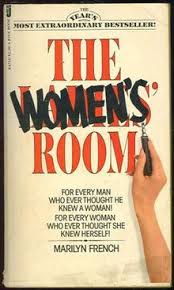
Marilyn French’s The Women’s Room isn’t one that would make the list solely on its literary merits. It’s well enough written, but its presence here is because I read it just at the point when I was not so much becoming a feminist, but realising that I was one. I read everything I could get my hands on – Germaine Greer, Betty Friedan, Kate Millett, Susan Brownmiller, Shulamith Firestone (best name ever!), Sheila Rowbotham, Simone de Beauvoir and more. But there are things that only fiction can do, and The Women’s Room illustrated and encapsulated so many of these arguments in the story of Mira and her friends. French herself said that it wasn’t a book about the women’s movement, rather a book about women’s lives today. And because there isn’t just one voice here, but many, we are free to disagree with the most extreme viewpoints without rejecting the whole thing. The novel was accessible in a way that most of the feminist writers listed above, frankly, aren’t. And whilst it attracted plenty of criticism, it changed hearts and minds, it made so many women feel that they weren’t alone in the way they felt about the way the world worked.
Fiction can do things that non-fiction, however well-written, however accessible, can’t. But very often fiction leads me to non-fiction – I want to know more about the place, the period, the events that the fiction describes. The next list is of books that illuminated what I read in the newspapers and in novels, and what I watched on TV and at the cinema. They may not be definitive works, they may have been overtaken by subsequent research, and for various reasons they aren’t books that I will read again and again, but they were my way into topics which have preoccupied me over very many years. If the overall impression is that, well, it’s all a bit grim, I can only acknowledge that as a true reflection of what I read. I don’t immerse myself in grimness for the sake of it but from a deep need to understand and the sense that as privileged as I am in so many ways I have no right to look away, to choose not to know. I still believe in humanity, despite everything.
We Wish to Inform You That Tomorrow We Will Be Killed With Our Families: Stories from Rwanda
I read the newspaper reports coming out of Rwanda in 1994 but it took me a long time to seek out the full story of what had happened there. Perhaps that’s partly because I knew how powerfully it would connect emotionally with what had been happening around me in Northern Nigeria in 1966. Philip Gourevitch’s 1998 book is not a definitive history of Rwanda, and arguably lacks some of the context that is necessary to understand why the genocide happened. But it’s clearly unreasonable to expect every book on a complex issue to cover everything, to be everything. Gourevitch’s focus is on the testimony of survivors, and thus on the accounts of specific atrocities. It’s vital and horrifying and heartbreaking.
The War Against The Jews, 1933-1945
My introduction to the Holocaust was, as for so many, reading Anne Frank’s diary. But her diary can only raise questions, not provide answers. She knew so little of what was happening to Jews in Amsterdam and across Europe, only what the adults with whom she shared the Annexe themselves knew and allowed her to hear. When we read her words we are encountering a real person, a child on the verge of adolescence, a bright child, who might have been ordinary or extraordinary, who knows, but whose circumstances were so extraordinary that we read her words weighed down by our own knowledge of what was happening around her, and what would happen to her. The simple questions – why did they have to hide? why did they have to die? – require answers not to be found within the pages of the diary. My next step was the TV series Holocaust – controversial and flawed but hugely valuable to a generation who suddenly saw how what happened to Anne Frank fitted within this huge picture, in which the members of one Jewish family between them encounter Kristallnacht, Aktion T4, the Warsaw Ghetto, Sobibor, Terezin, Auschwitz…
Holocaust led me to Lucy Davidowicz’s 1975 account of the war against the Jews. This is not the definitive study – as if there could be such a thing – and has been harshly criticised by Raul Hilberg in particular, for its lack of depth and rigour. But it got me started, it gave me an overview and led me to read extensively amongst the vast literature on the subject, exploring not just what happened, but why and how and who, and the implications for the generations since (Middle East politics and international law in particular).
And the Band Played On: Politics, People, and the AIDS Epidemic (1980–1985)
I remember during the mid-1980s the first newspaper articles about a ‘gay plague’, and the emerging moral panics, the information leaflets and the ‘tombstone’ advert on TV. Randy Shilts’ 1987 book was what made sense of that mess of misinformation, prejudice and ignorance. It’s a work of investigative journalism, particularly in relation to the response and actions of medical researchers, but it’s also, always, personal. As a gay man in San Francisco, Shilts was not writing about something that was happening to ‘others’ but something that was happening to his own community and, ultimately, to him (he was confirmed to be HIV positive in 1987, having declined to find out his status whilst writing the book in case it skewed his approach, and died in 1994, aged only 42). It’s an often shocking book, heartbreaking and as compelling a page-turner as any detective novel.
Bury my Heart at Wounded Knee: An Indian History of the American West
James Michener’s massive, sweeping novel based on the story of a Colorado town, Centennial, was my introduction to many aspects of American history. Michener transposed many historic events, in particular the Sand Creek massacre to his fictional location so that through the lives of people in that one town (more or less) the great themes of US history could be touched upon.
I was fairly well-versed in the Civil Rights movement, having read not only about Martin Luther King but about the Black Panthers, Angela Davis and George Jackson. But my knowledge of the story of the Native Americans was patchy, to say the least. I knew enough to be sure that the portrayal in the westerns I’d watched as a kid was at best simplistic or romanticised and at worst racist, but Centennial made me want to know much, much more.
Dee Brown’s book is explicitly an Indian history (published in 1970, when presumably that terminology was still felt to be OK….) in which the Native American peoples are at the heart of the story of their own land. It’s a brutal story – they were lied to and stolen from, they were forced into dependency and then vilified for that dependency, and they were murdered in huge numbers. Brown’s history takes us up to 1890 and the Wounded Knee Massacre (sometimes referred to as the Battle of Wounded Knee which gives a rather false impression) which is seen as marking the end of the ‘Indian Wars’ – though not the end of conflict or of killing.
I found out recently about a series of murders of Osage people in Oklahoma in the early 1920s, motivated by the discovery of big oil deposits beneath their land and involving legal trickery to secure the inheritance of the victims (whose deaths were initially seen as being from natural causes). David Grann’s Killers of the Flower Moon is a fascinating read, a true-crime account which takes the story of the genocide a generation onwards, a small-scale version of what happened to the indigenous peoples across the continent.
All the President’s Men
This could scarcely be more pertinent, as Bob Woodward, one of the Washington Post reporters responsible for this account of the Watergate break-in and the scandal that brought down President Nixon has just published Fear: Trump in the White House… At the time it was all happening I followed events avidly, finding it hard to credit that such a plan could have been dreamed up, executed (incompetently) and then covered up (incompetently) at such high levels of government. The intervening years have made it easier to believe such things… This book, which appeared as the story was still fresh and new, was a brilliant piece of journalism, with all of the tension of a detective story. There was a follow-up, The Final Days, describing the end of Nixon’s presidency, and many other books, including from some of those implicated (such as John Ehrlichman, whose account was the basis of the 1977 TV mini-series, Washington: Behind Closed Doors, in which an all-star cast portray President Richard Monckton and his aides, associates and accomplices).
So, that’s my ten books… Ten themes in the books I devoured as a child, ten books (five – oh, OK, seven if you’re going to be picky – fiction, five non-fiction) that I read as an adult that have in one way or another stayed with me. I was never going to be able to pick just ten, was I?
Books of the Year 2017
Posted by cathannabel in Literature on November 28, 2017
These are the books that have made the most impression upon me, that have made me want to read everything by that author, tweet madly about how wonderful they are and press copies upon everyone I know, during 2017. Many, but not all, appeared during 2016/17.
Earlier this year I undertook a challenge, to read 60 books in 60 days. Reader, I nailed it. I also blogged extensively about the books I read and I don’t intend to duplicate those reviews here, though I will list the books that make my ‘best of’ list which were part of that project. Quite a few, actually.
One of the first books I read in 2017 was Clive James’ Cultural Amnesia. I commented at the time that this was likely to end up being one of my books of the year, and nothing has displaced it. He made me feel incredibly un-well-read, but without making me feel stupid, rather, inspired to go away and read the stuff he was talking about. It’s truly wide-ranging – people he loathes as well as people he admires, acerbically funny, which is not always easy to pull off whilst being erudite, and it’s a book that I will go back to again and again for enlightenment, for brilliantly pithy comments, and for the impetus to read stuff that I haven’t yet braved.

As always, I found myself reading around various aspects of World War II.
Anne Sebba’s Les Parisiennes: how the women of Paris lived, loved and died in the 1940s (2016) is a fascinating account, featuring collaborators and resisters and everyone in between, drawing on some sources that I was familiar with but many more that I wasn’t, and weaving them all into a rich tapestry which shows how life in Occupied Paris was both normal and entirely abnormal at the same time, depending on who and where you were. I thought often of Michel Butor’s comment, speaking of his own adolescence in the city, that it felt as though nothing was happening but that the nothing was bloody.

Lara Feigel’s The Bitter Taste of Victory: in the ruins of the Reich (2016) again draws upon contemporary sources (with particular, but not exclusive, emphasis on some of the women writers, reporters and artists – Martha Gellhorn, Rebecca West, Lee Miller, Erika Mann) to paint a vivid picture of the devastation of Berlin and other German cities after the end of the War, and during the Nuremberg trials. I followed this up with Rebecca West’s near-contemporary first-hand account, A Train of Powder (1955). Philippe Sands’ East West Street (2016) covered this period too, but from the perspective of those who were developing the definitions of genocide and crimes against humanity which were so crucial to the judgments at Nuremberg and to our response to such crimes in the decades that followed. What makes his account particularly powerful is that he weaves his own family history into that of the architects of the legislation. He makes the connection with his grandfather’s home in Lemberg (aka Lwów or L’viv) which was also where Lauterpacht and Lemberg, the two Jewish lawyers who were so instrumental in giving us the legal framework, grew up and were educated – and who are Sands’ own antecedents too, in his life as an international human rights lawyer. Adding to this coincidence, I found myself reading in quick succession two other family histories, that of Eva Hoffman, born in Cracow at the end of the war but whose parents survived the war in the Ukraine, near Lwów (aka L’viv or Lemberg), emigrating post-war from Poland to Vancouver (Lost in Translation: Life in a New Language), and then that of Lisa Appignanesi (Losing the Dead: A Family Memoir), an account of how her parents passed for Aryan in occupied Poland before relocating to Quebec.
Still in WWII but behind the Eastern Front, Nobel Laureate Svetlana Alexievich’s extraordinary oral history, The Unwomanly Face of War (2017) lets us hear the voices of the women who fought in the Red Army. Rather than the stereotypes perpetuated by Soviet propaganda or the opposing Western propaganda, we meet real women who did extraordinary things, who confronted not only opposing armies but prejudice from their comrades in arms and commanding officers, and from their families at home. And personal conflicts too – these often very young women fell in love, and mourned the loss of their femininity, and feared whether they would find husbands when the fighting was done. Alexievich’s book first came out in 1985 but has been expanded to bring in more recent interviews, and material from earlier interviews which could not be published previously.

And another remarkable and compelling history from David Olusoga – Black & British: a forgotten history (2016). Alongside bits of history that I was familiar with there’s so much that was new, and ran counter to assumptions that I might have previously made. It also brought back some very early childhood memories, of visits to the forts on the Ghanaian coast, places where slaves were held before they were loaded into the ships to cross the Atlantic.
I also thoroughly enjoyed Robert Webb’s How not to be a Boy, clearly a response to Caitlin Moran’s wonderful How to be a Woman/How to Build a Girl. It is extremely funny, and – as with Moran’s books – often very moving as well.

Other outstanding non-fiction titles which were part of my 60 books challenge: Aminatta Forna – The Devil that Danced on the Water: A Daughter’s Quest (2003); Noo Saro-wiwa – Looking for Transwonderland: Travels in Nigeria (2012); David Grann – Killers of the Flower Moon: The Osage Murders and the Birth of the FBI (2017).
When it comes to fiction I resent categorisations by genre, which always somehow end up marking some things as ‘literature’ and others as ‘crime’ or whatever. However, given the sheer number of crime/thriller/detective novels that I read, it makes sense to group them together.
New discoveries this year include Ben Aaronovitch’s somewhat bonkers urban fantasy detective novel, Rivers of London (2011). This is the start of a series, which I have yet to follow up.

I came across Helen Cadbury’s Sean Denton police procedurals, To Catch a Rabbit (2013) and Bones in the Nest (2015) set in South Yorkshire, gritty and gripping. I’d only just read them when I heard that she’d died, an awful loss. There’s one more Sean Denton novel just out, which I haven’t read yet.
I’ve been binging on various series featuring women detectives and as a result I’ve run out of several of my current favourites: Jane Casey’s Maeve Kerrigan (Let the Dead Speak, 2017), Susie Steiner’s Manon Bradshaw (latest one is Persons Unknown, 2017), Sarah Hilary’s Marnie Rome (Quieter than Killing, 2017), and Valentina Giambanco’s Alice Madison (Sweet after Death, 2017). They all feature central women characters who are complicated and interesting, tight plotting, intriguing peripheral characters, and an overall plot arc which, whilst it doesn’t prevent each novel from being freestanding, gives a depth to the series if you read them consecutively.
Fortunately, whilst I wait for Casey, Steiner, Giambanco and Hilary to come up with new titles (no pressure, but do hurry up!), I’ve got lots to read by Elly Griffiths, whose The Crossing Places (2009) and The Janus Stone (2010) features not a woman cop but a forensic archaeologist, Ruth Galloway. I’m looking forward to the rest of this series.
Noah Hawley was new to me as a novelist, but I’d loved his writing for three TV series of Fargo, full of wit and heart and surprises. His 2016 novel, Before the Fall lived up to the expectations that Fargo had raised. It’s a thriller, about truth and lies, fame and reality.

And a writer new to me but channelling (very convincingly) one of my all-time favourite detective novelists, Dorothy L Sayers. Four new Lord Peter Wimsey stories from Jill Paton Walsh, a delightful chance to reacquaint myself with Peter and Harriet and Bunter and (oh joy!) the Dowager Duchess, and to see them in the context of world events and radical changes in society. (Thrones, Dominations (1998)/A Presumption of Death (2002)/The Attenbury Emeralds (2010)/The Late Scholar (2013))

And some fantastic 2017 titles which were part of my 60 books challenge: Sam Bourne – To Kill the President, Jo Furniss – All the Little Children, Lesley Glaister – The Squeeze , Jane Harper – The Dry .
Another terribly sad loss this year was that of Helen Dunmore. I’ve read most of her work over the years, this year alone I read three (The Lie (2014)/Exposure (2016)/The Betrayal (2010)). I’m grateful for all the pleasure her books have given me, and that there are a few more for me to look forward to reading, including her final novel, Birdcage Walk.
This was the year I finally finished a ten-year project – to read all of Proust. In French. Le Temps retrouvé bit the dust in April, and I blogged about it here.

Prompted by my University of Sheffield Book Group, I read Harper Lee’s Go Set a Watchman (2015).

I suspect I’m not the only person with a deep fondness for To Kill a Mockingbird, and a tendency to idolise Atticus Finch, who’d kind of been putting this off, having read some of the reviews (and the controversy about whether Lee genuinely wanted this to be published and/or had the capacity to make that decision). I’m glad I did read it, but it’s complicated, and I will be pondering more about this separately, because reading it sent me off on so many different trains of thought.
And finally, after reading another alt. US history (Philip Roth’s The Plot against America) I got round to Sinclair Lewis’s account of a demagogue, ‘vulgar, almost illiterate, a public liar easily detected, and in his “ideas” almost idiotic’, who wins the Democratic presidential nomination and then the Presidency. He wins support despite the vulgarity and the lies and the lack of content in his speeches by addressing the people as if ‘he was telling them the truths, the imperious and dangerous facts, that had been hidden from them.’ And he attacks the Press in very familiar terms:
I know the Press only too well. Almost all editors hide away . . . plotting how they can put over their lies, and advance their own positions and fill their greedy pocketbooks by calumniating Statesmen who have given their all for the common good.
It is impossible to read It Can’t Happen Here (1935) without seeing the current incumbent of the White House in the place of Buzz Windrip. In the run-up to his election, the Guardian analysed the similarities, and the Washington Post compared Trump not only to Windrip but to Philip Roth’s Charles Lindbergh. We are forewarned.
As part of the 60 books challenge, I read more from long-term favourite writers Stevie Davies (Awakening, 2013), Patrick Gale (The Whole Day Through, 2009), Rose Tremain (The Gustav Sonata, 2016) and Livi Michael (Succession, 2014). I’ve already followed up Livi Michael’s excellent Wars of the Roses historical novel with the rest of the trilogy (Rebellion, and Accession). I finally read The Handmaid’s Tale and The Garden of the Finzi Continis. I discovered new writers: Sarah Moss, Nii Ayikwei Parkes, Per Petterson, and Andrew Michael Hurley, amongst others.
This represents only a fraction of what I’ve read in 2017. The 60 books are fully documented, and outside of that project I’ve tried to keep a note as I go along, but I know I’ve forgotten some things (maybe justly, maybe not). And of course this list represents the best of what I’ve read, the stuff that, as I said earlier, I’ve been evangelical about getting other people to read, and have followed up or plan to follow up with more by the same writer. I have a policy of not mentioning the books I’ve read (completed or abandoned) which I’ve found tedious, or badly written, or just profoundly mediocre (although if I found something I was reading to be pernicious, dangerous, defamatory or whatever, I reserve the right to make a noise about that). Generally, though, let other pens dwell on clunky dialogue, cardboard characters and so forth – the world is full of books that give pleasure and enlightenment, that inform and move and delight, and I’d rather talk about them.
Meantime, my ‘to read’ pile never seems to diminish, no matter how much and how fast I read. Priorities include finishing Anthony Beevor’s magisterial The Battle for Spain, which I put to one side during my 60 books challenge, and have not yet resumed, and others which I have still to acquire, Coulson Whitehead’s The Underground Railroad, Jon McGregor’s Reservoir 13, Maggie O’Farrell’s memoir, I am, I am, I am (as well as any of her novels I haven’t read yet), and lots more Ali Smith. Right, better get back to the books…

















